Russia & Baltic States. Extensive lake landscapes, enchanted moors, historic town centres, world-famous museums and numerous relicts from the Soviet era. Our road trip around half the Baltic Sea has left us with many impressions. Finland, Russia (Karelia), the Baltic States, Kaliningrad and Poland were on the route of our road trip. A route that could hardly be more varied. Simply the perfect mix of nature and culture. And the icing on the cake: there are many great pitches for the camper, mostly free of charge and often directly by the sea. A dream, right? In my article you can read which highlights I can recommend for your road trip in the west of Russia & the Baltic States. Furthermore you will get a lot of helpful information and tips for your road trip at the Baltic Sea including route suggestion and map.
This article contains unsolicited and unpaid advertising and affiliate links*.
What you will find in my Article:
Roadtrip Russia & Baltic States - Route, Highlights and Pitches
Our Motorhome "Arwak" - the Iveco 40/10 WM
By Ferry from Travemünde to Helsinki
21 Highlights for your Road Trip in Russia & Baltic States
Allgemeine Tipps für euren Roadtrip

Roadtrip Russia & Baltic States - Route, Highlights and Pitches
Why a road trip on the Baltic Sea? Well, the Baltic Sea begins almost at the gates of Berlin. The journey is short. After about 4 hours by car, we finally get on the ferry and the journey begins. A journey through six countries with varied landscapes, diverse culture, interesting history and friendly people.
We have covered a distance of about 4,500 kilometres in 30 days. So about 160 kilometres a day. Sometimes more sometimes less. In some places we also stayed 2 or 3 days. In the map I marked our places for the night and our route. You can also see many little hearts on the map - these are the highlights of our road trip in Russia & Baltic States, which I describe in the following.
Our Motorhome "Arwak" - the Iveco 40/10 WM
It never gets boring on a road trip. So also this time: Already on the second day we noticed a hole in the exhaust. First we tried to repair it with an exhaust kit. But it got bigger and bigger. One day later we improvised in the Russian way: From the roadside we collected empty beverage cans. We cut off the bottom and lid so that we had flat metal sheets. Then we wrapped six pieces of it around the meanwhile about 5 cm long crack in our exhaust pipe. Finally we fixed the whole thing with two hose clamps. The remainders of the exhaust putty also glued everything from below. We also made another suspension for the front part of the exhaust. Done!

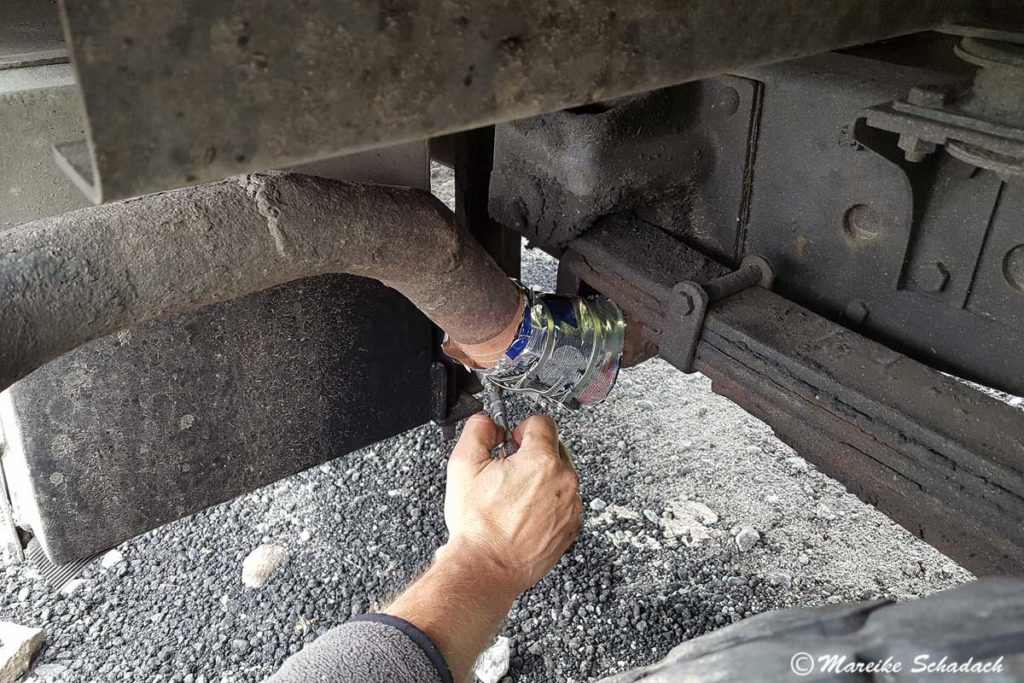
In the meantime "Arwak" has a new exhaust. Do you want to know more about our Iveco 40/10 WM? Then look here, he has his own page.
If you don't have your own camper, you can find the right van for your road trip at Paul Camper*.
By Ferry from Travemünde to Helsinki
A road trip around the whole Baltic Sea is long. With a detour to the White Sea about 6,000 kilometres. With an average of 160 kilometres a day, you would need about 5.5 weeks. But for most of us the possible summer holiday is shorter. We had four weeks. A trip around the Baltic Sea including a detour to Russia was therefore out of the question for us. Good that there is a shortcut.

Crossing with Finnlines from Travemünde to Helsinki:
Costs: for e.g. two persons with camper in high season without cabin about 557 Euro. With double cabin about 719 Euro.
Times: All year round; departure depending upon weekday between 2:00 and 3:30 o'clock, arrival after 29 hours at 9:00 or 9:30 o'clock.
Click here to go to the Finnlines website with the current timetables and costs.
Check-in opens at 21:00 and closes two hours before departure. However, the boarding does not start until about 23:30. Vehicles higher than 2.10 metres will be parked on another deck and therefore loaded later. For passengers with higher vehicles it is therefore recommended to arrive at the check-in only around 23:00 hrs. Here you can also find more information about a ferry trip by motorhome at Finnlines .
21 Highlights for your Road Trip in Russia & Baltic States
#1 Relaxed Start - Suomenlinna near Helsinki
After 29 hours of ferry travel we arrive in Helsinki in the morning. The whole day still lies ahead of us. We want to explore Helsinki. But at the same time we want to take it easy. Therefore we decide first of all for an excursion to the archipelago islands of Suomenlinna.
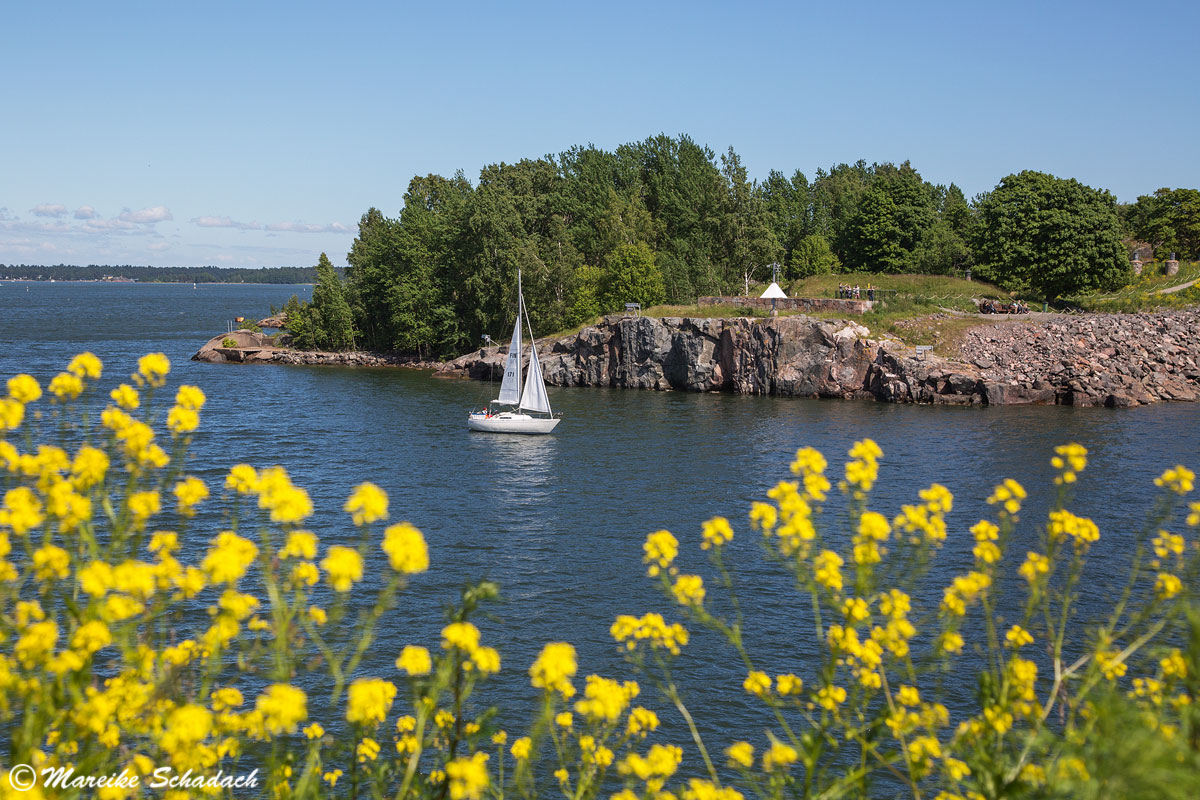
Suomenlinna is a fortress from the 18th centuryIt is located on several connected islands just off Helsinki. The complex comprises around 200 buildings on a total of 80 hectares and is also a prime example of military and fortress architecture. Suomenlinna was used for military purposes until 1973. Today, however, only one island is reserved for the military school. The rest can be visited.
There is an information centre, two museums, a gallery and several cafés, restaurants and souvenir shops. In the information centre at the ferry pier you can get a map with which you can move around the islands on your own. In this map, for example, a 1.5 kilometre long main route is recommended. The route includes all important sights. Information boards inform you about the sights and their history.


The UNESCO World Heritage Site Suomenlinna is one of the most popular destinations near Helsinki. The islands can be reached within 15 minutes by public ferry. In summer, the ferry departs every 15 to 20 minutes directly from Kauppatori square. You can also find more information on the website of Suomenlinna.
#2 Porvoo - charming Fishing Village with colourful wooden Houses
The small town of Porvoo is famous for its rust-red wooden houses on the banks of the river Porvoonjoki. They date back to the 18th century and were formerly used as salt storages. Porvoo's beautiful old town with its narrow streets, charming cafés and boutiques invites you to stroll and linger. The colourful Scandinavian wooden houses are lovingly decorated and everything looks a bit like an open air museum. Porvoo is the second oldest town in Finland after Turku and was also an important trading town as early as the 13th century. Most of the buildings in the old town are not quite as old, because a fire in 1760 burned down most of them.

High above the old town is the cathedral from the 15th century. It is the episcopal church of the Lutheran Protestant diocese of Borgå and also the landmark of Porvoo. In 2006, however, the cathedral was severely damaged by fire. While the wooden roof burned down almost completely, the interior of the cathedral has been largely preserved.

Porvoo is only 50 kilometers from Helsinki. The pretty little town is therefore one of the most popular destinations for day trips from the capital. We also came from Helsinki and stayed at the nearby camping site "Sun Camping". Afterwards we went on to the lake district in the direction of Savonlinna.
#3 Lake District in Finland - lots of Water and even more Mosquitoes
There are about 470 kilometres between Helsinki and the border crossing to Russia at Niirala. Most of the route runs through the famous Finnish Lake District - the largest lake district in Europe. A labyrinth of lakes, rivers, islands, moors and dense forests extends over more than 100,000 km². We particularly enjoyed two of our stopovers on our way across the Finnish Lake District: The village of Savonlinna with the medieval castle Olavinlinna and the oversized wooden church of Kerimäki.
Olavinlinna was completed in 1475 and is considered the best preserved medieval castle in Northern Europe. It is situated in the middle of the Saimaa lake system on a small island and can therefore only be reached by a pontoon bridge. However, to allow larger ships to pass, the Poton Bridge can be folded to the side.


The church of Kerimäki is the largest wooden church in the world. The neoclassical domed church was completed in 1847 after three years of construction. It can hold up to 5,000 people, with seating for 3,400 of them. The pews have an unimaginable total length of over 1.6 kilometres. The parish last had 5,526 inhabitants - so the church seems a little oversized.
At a resting place at a little frequented country road we found a nice place for the night. But when we came to rest after a long day, the mosquitoes became lively. So in the evening we could only go outside with long clothes and armed with insect spray.

But even if the mosquitoes were bothering us - we would have liked to spend more time here. And at that time we didn't know that there were many more mosquitoes on the Solovetskie Islands in Russia - one of our next stops.
#4 Petrozavodsk - Welcome to Russia!
Petrozavodsk is for many people only the starting point for trips to the open-air museum Kischi. But for us the city itself was a highlight on our road trip Russia & Baltic States. We especially liked the shore promenade at Lake Onega - the second largest freshwater lake in Europe. The promenade is surrounded by an attractive park area and therefore perfect for a walk. You can see various sculptures, for example the Silver Fishermen casting a net. And if you like it a bit more sporty: the park is equipped with a public fitness area - here people train hard.

Petrozavodsk means translated as "Peter Works". It refers to the iron and cannon factory which Peter the Great had built here in 1703 and thus founded Petrozavodsk. However, the plant was replaced 70 years later by the Alexandrovsky Steelworks. A statue of Peter the Great points with his finger to the place where Petrozavodsk was founded. The monument was unveiled in 1873 to celebrate the 100th anniversary of the Alexandrovsky Steelworks. Since 1978, however, the monument has stood on the shore of Lake Onega near the pier.
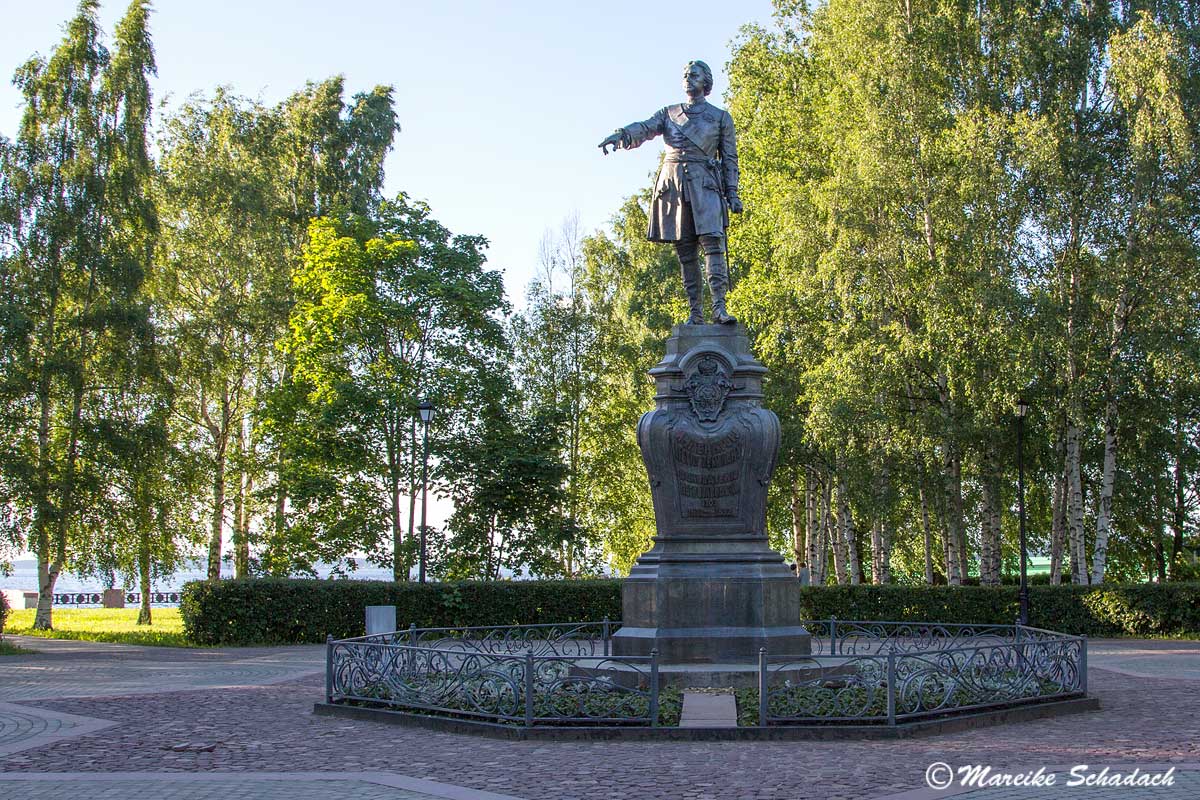
Guided tours as well as tours on your own initiative can be found here. Petrozavodsk also has beautiful examples of neoclassical architecture, e.g. the Alexander Nevsky Cathedral or the Musical Theatre of Karelia. You can also see a large statue of Lenin from 1933 in Central Lenin Square.
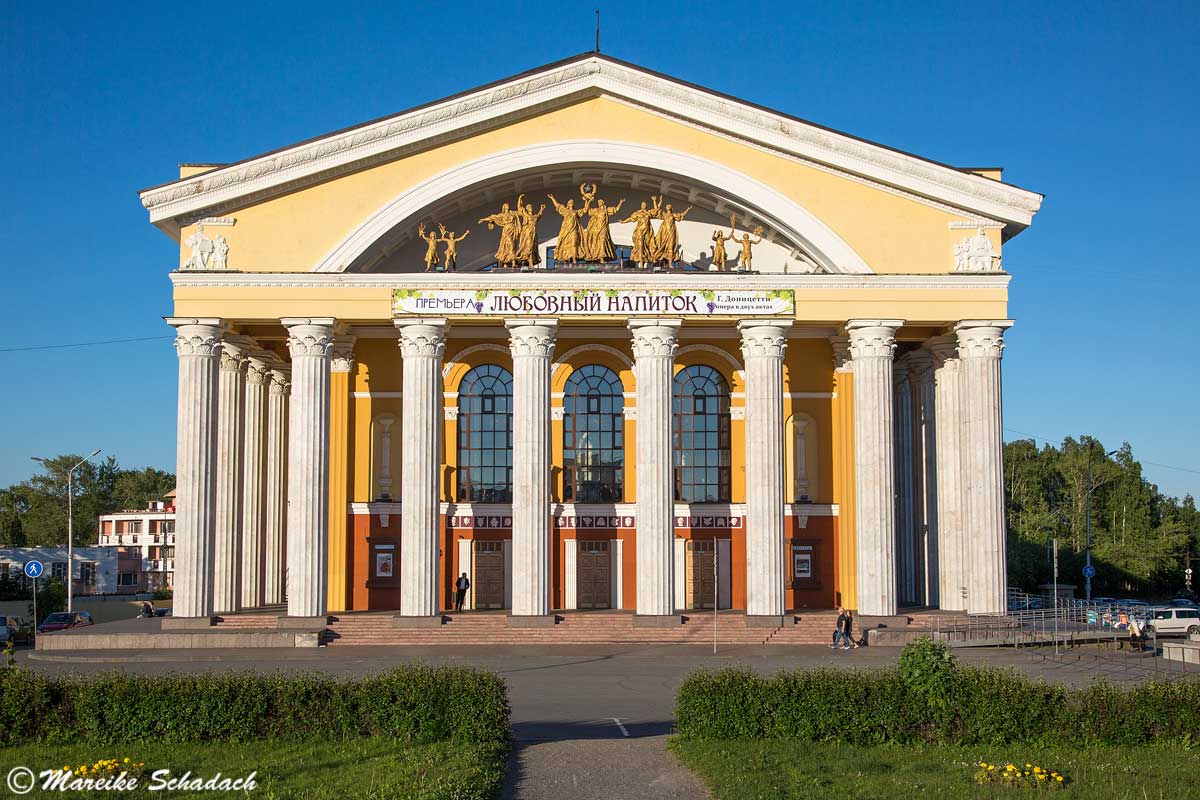
Pitch for the Night
We stayed at Nord Camping for three nights. The small cosy camping site is only a five minute walk from the boat landing stage and is equipped with everything you need.


Ideas for your next Road Trip
Are you looking for ideas and inspiration for your next road trip or for your camping stove? Then I can recommend these books*.
You can order the books at Amazon by clicking on the pictures. If you buy a product via an affiliate link, I get a small commission and you help me to keep filling Fernweh-Motive with interesting articles. The product will not be more expensive for you and you do me a huge favor.
#5 With the "Raketa" to the Open Air Museum Kischi with Karelian Wood Architecture
The open-air museum Kischi is the most famous of its kind in Russia. Already since 1951, historical wooden buildings from all over Karelia have been brought here: houses, chapels and even windmills. In 1966 Kischi became an official open-air museum, and since 1990 it has even been listed as a UNESCO World Heritage Site. It displays 80 unique examples of Karelian wooden architecture, such as churches from the 17th and 18th centuries.


The most beautiful and also most famous building in Kischi is the Church of the Transfiguration of Christ, completed in 1714. Its roof is decorated with 22 onion-shaped domes. A few years later the heated winter church was built next to it. However, it is smaller than the summer church and has only 8 domes. The churches also have a separate bell tower.






The excursion to the open-air museum Kischi was one of the most impressive highlights on our road trip Russia & Baltic States. Because just the trip with the hydrofoil "Raketa" was a lot of fun. The Russian "Raketa" was produced in the Soviet Union from 1956. Altogether more than 400 boats of this type were built at that time. The Raketa is 27 meters long and 5 meters wide. It offers space for 60 to 65 people and reaches a speed of up to 58 km/h. When sailing, it lifts itself out of the water and glides on its wings. The draft then changes from 1.8 metres to about 1.1 metres. (Source: Wikipedia)


Directions to get there: From Petrozavodsk, hydrofoils leave from May to October up to five times a day. It takes about 75 minutes to reach Kishi. You can buy tickets directly at the boat landing stage. In winter, hovercraft crossings are offered.
#6 Solowezki Islands - moving History and Beluga Whales
In the White Sea, about 160 km south of the Arctic Circle, lies a group of islands with a moving history. Why the Solowezki Islands are worth a visit and what is worth seeing on the islands, you can read in my separate article Solowezki Islands - Sightseeing and Travel Tips. This unusual destination welcomes you with a great subarctic nature and Russian hospitality. And with a little luck you might even be able to watch Beluga whales.
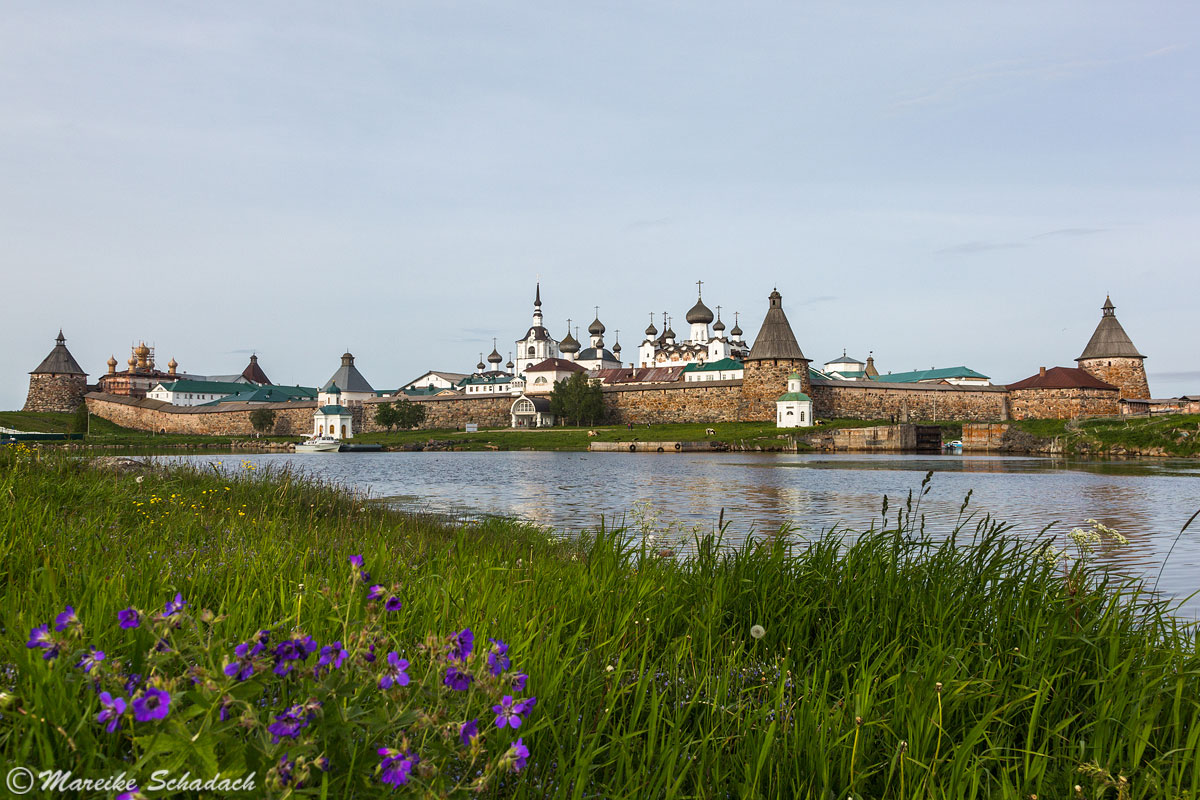
The calm shallow water in front of the Solowezki Islands is also the nursery of the Beluga Whales. Because in summer they come here to give birth and raise their young. How you can get to the Beluga Cape lookout point on your own and what you have to consider when doing so, you can read in my separate article about the Beluga Whales of the Solowezki Islands. The tour to the Beluga Whales was my personal highlight on our road trip in Russia & Baltic States. Because we became witnesses of a whale birth. And this on my own birthday!
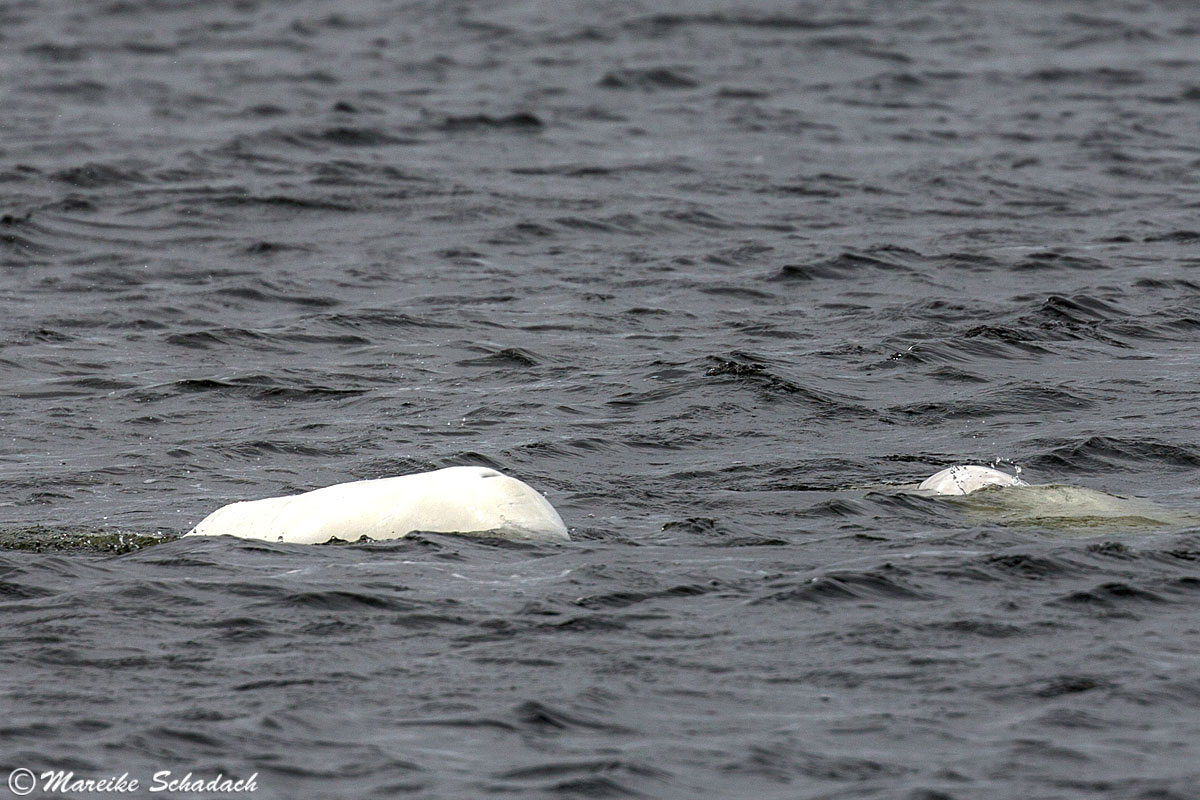
Pitch for the Night
The Prichal Tourist Centre is located directly at the ferry pier. There are bungalows, a restaurant and a guarded parking lot, which can also be used as a camping site. We have also reserved our ferry tickets to the Solowezki Islands in advance by email via the tourist centre.
#7 St. Petersburg - Our Highlights for 3 Days
After we spent the last ten days completely relaxed in extensive Karelia, action was now on the agenda. The journey to St. Petersburg on the E105 alone was exciting. Because the traffic was getting denser. And the Russian driving style became a challenge. As our camper is not the fastest - its travel speed is about 80 km/h - we were constantly overtaken. The overtaker did not always pay attention to the oncoming traffic. For us it continued on the side-strip - fortunately it was asphalted. So a two-lane country road became a three-lane one. We were very happy when we finally arrived at our campsite in St. Petersburg.

After a short break we went on. Because during our 3-day stay in St. Petersburg we wanted to see as much as possible. Here are our favourites:
Hermitage - the Classic in St. Petersburg
For a visit to the world-famous Hermitage you should plan at least half a day. And even then you must limit yourself to the most interesting rooms. However, the Hermitage provides a great tool for planning your visit: the Trip Planner. With it you can plan your own personal tour in advance. There are also guided tours and audio guides in several languages. To avoid the long queues at the ticket offices, you should buy online tickets in advance. And by the way: photography is allowed in the permanent exhibition of the museum, but only without flash and tripod.


Kazan Cathedral
The queuing was worth it! Because when we entered the Kazan Cathedral, a service was just being held in one wing. The faithful stood in front of the altar, reciting verses with the priest and crossing themselves again and again. Meanwhile, the interior of the cathedral was filled with an impressive, almost mystical atmosphere.


But even without a ceremony, the Kazan Cathedral is a highlight in St. Petersburg that you should definitely visit. The Russian-orthodox sacral building was built from 1801 to 1811 after the model of the Roman St. Peter's Cathedral and is the second biggest church of the city. It is also one of the most imposing buildings of St. Petersburg and is located directly at the Nevsky Prospect. The entrance is free of charge.
Arctic and Antarctic Museum St. Petersburg
The Arctic and Antarctic Museum is my favourite museum in St. Petersburg. The exhibition is impressively extensive and also in a very unusual location: the former Nikolauskirche. The museum was one of my highlights during our whole road trip Russia & Baltic States. Therefore I wrote a separate article about the Arctic and Antarctic Museum in St. Petersburg .
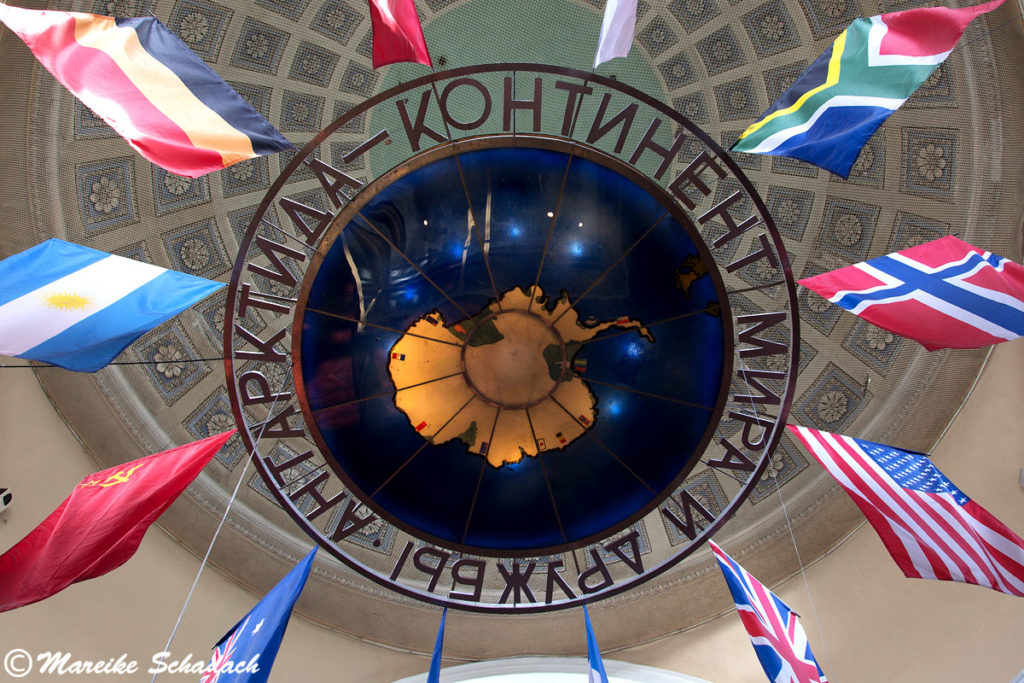

Church of the Savior on Blood
The colourful cathedral on the Griboyedov Canal has several names. Officially, however, it is called the Cathedral of the Resurrection of Christi. But more often it is called Church of the Savior on Blood. Because it was built over the blood stain by Tsar Alexander II, who was the victim of a deadly assassination attempt here in 1881 on his way to the Winter Palace.


With its Old Russian architectural style, it is reminiscent of the St. Basil's Cathedral on the Red Square in Moscow. It provocatively stands out from the cityscape of St. Petersburg - a city that was then absorbed by Western classicism. During the Soviet era, the church served as a warehouse for potatoes or theatre backdrops (depending on the source of information).
The Church of the Savior on Blood is already an eye-catcher from the outside. But from the inside it almost makes you marvel even more. Because on an area of 7000 m² the Blutskirche is decorated with the most beautiful mosaics. In the cathedral there is also a decorated shrine with the cobblestones on which Alexander II died.
Peter and Paul Fortress
The Peter and Paul Fortress is located on a small island in the Neva and is only accessible via two bridges. On the island there are, beside the worth seeing Peter-Paul-Cathedral, many other museums, for example the Museum of Space History or the Museum of Instruments of Torture.
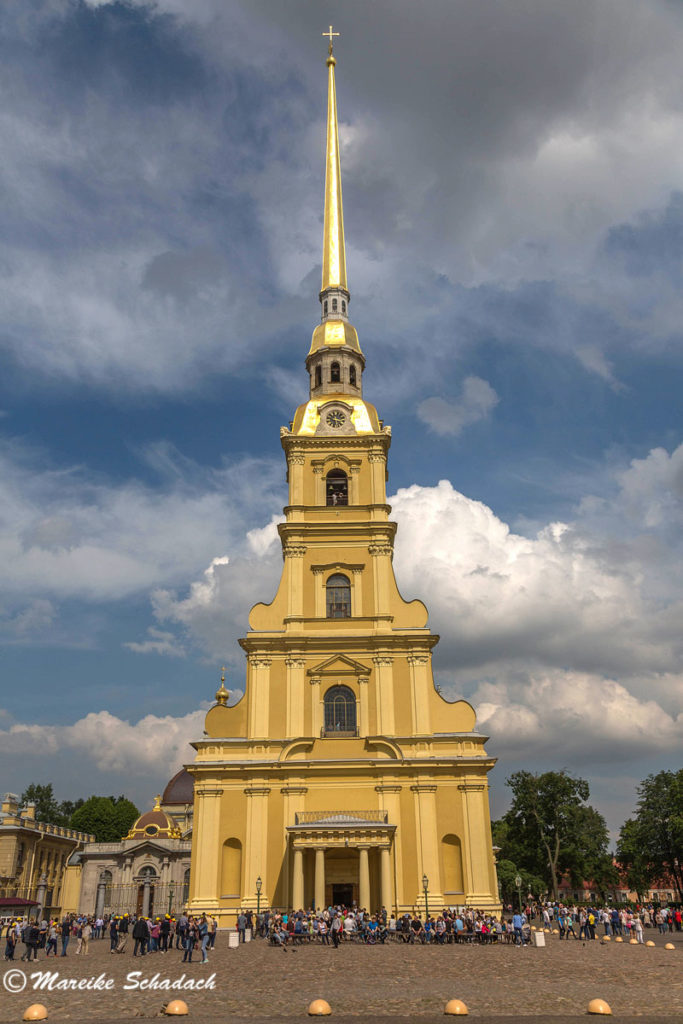

The Peter-Paul-Cathedral from 1733 is the oldest cathedral of the city and also the highest building in the city centre. The long golden tower top is also one of the landmarks of St. Petersburg. From the viewing platform you have a great view over the fortress. Inside, the cathedral is adorned with coloured marble columns, crystal chandeliers and gilded icons. It also houses the shrines of the Romanov tsars.
Cathedral of Saint Isaac
St. Isaac's Cathedral is the most magnificent church in St. Petersburg. It was completed in 1858 after 40 years of construction and is one of the largest sacred domed buildings in the world. With its huge golden dome, the cathedral is also the second tallest building in the city centre. From up here you have a fantastic view over the city. The view is especially beautiful in the evening hours, when the golden domes of the city shine even more golden.


Pitch for the Night
We have stayed in the camping area of the motel «Елизар» (Elizar). This is a fully equipped, fenced-in area next to the hotel. There is even a laundry service. The nearest subway "Elizarovskaya" is only a three minute walk away. Tip: Many more parking lots for a road trip in Russia can also be found at the Baikalsprinter.
#8 Amber Room in the Catherine Palace
The legendary Amber Room is still missing today. Many clues as to the whereabouts of the "Eighth Wonder of the World" have led nowhere. But since 2003, the Amber Room has been reconstructed in the Catherine Palace true to the original. It is admirable - a real masterpiece and also one of the highlights on our road trip Russia & Baltic States.
The Amber Room was made at the beginning of the 18th century for the Charlottenburg Palace in Berlin. It was a room with amber wall panelling and furniture. Later on it was installed in the Berlin City Palace. However, shortly afterwards, in 1716, the Prussian King Friedrich Wilhem I gave the Amber Room to the Russian Tsar Peter the Great. After it had been built in the Winter Palace in St. Petersburg, it was finally moved to the Catherine Palace in Tsarskoe Selo in 1755. During the Second World War it was brought to the Königsberg Palace by the Germans as spoils of war. However, when the bombing raids on Königsberg began in 1944, the Amber Room was removed and stored. Since 1945 it has been missing.

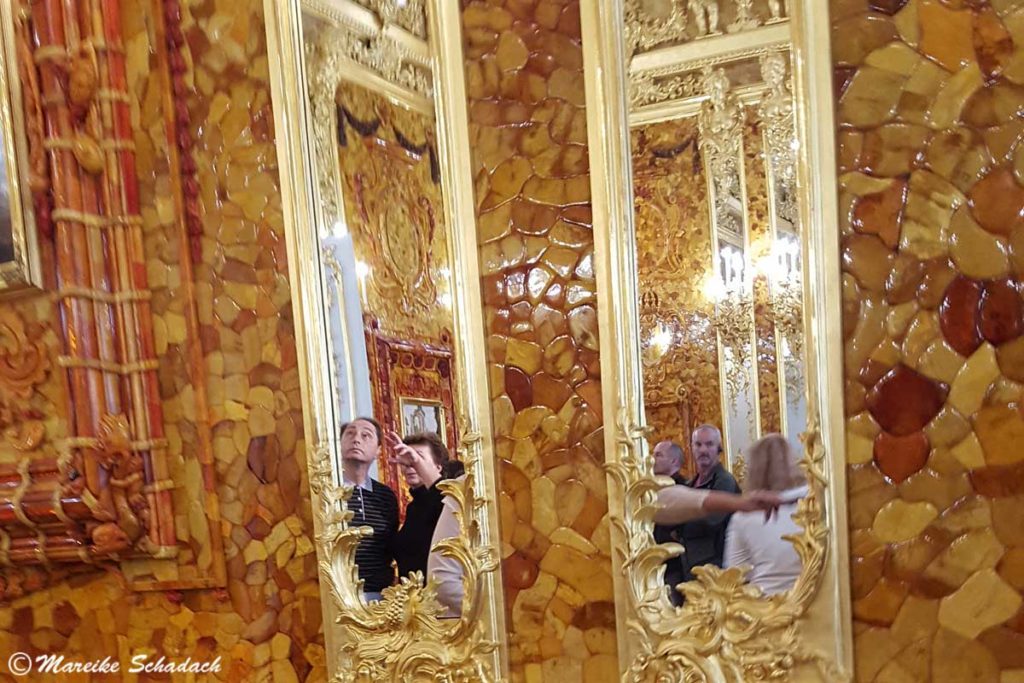
"Tsarskoe Selo" in English "Tsar village" is located about 25 km south of St. Petersburg. The Catherine Palace from 1752 with its Amber Room is the main attraction here. But also the rest of the palace, the park with further buildings, ponds, flower beds and small bridges is worth seeing. But be prepared for long queues.


#9 Medieval Flair & Sea Museum in Tallinn
Medieval Tallinn
Tallinn is considered the best preserved medieval city in Northern Europe. Narrow cobblestone streets are lined with historic merchant houses, barns and warehouses. In between, towers of Gothic churches tower and offer spectacular views. The medieval flair of the old town is enchanting and invites you to go on discovery tours. And you can do these tours comfortably on foot, because many sights are very close together. How about a medieval menu in an authentic atmosphere afterwards? Around the Rathausplatz you are spoilt for choice. But we especially liked the Old Hanseatic Restaurant Packhaus .
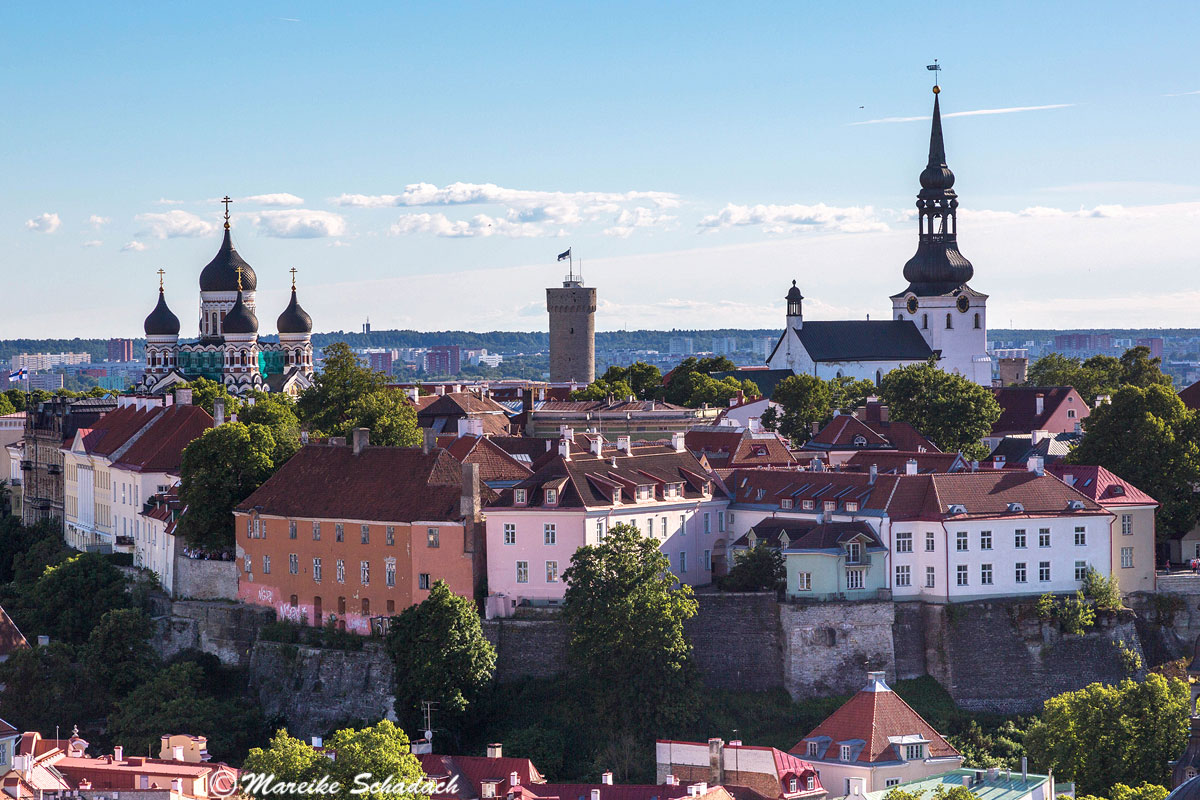
The Maritime Museum in the former Seaplane Port
There are many interesting museums in Tallinn. But there is one you should not miss: The Estonian Maritime Museum. The Sea Museum is worth seeing just because of its location in the former sea airport.
Since 1981, the headquarters of the Tallinn Sea Museum have been located in the Dicken Margarethe, a cannon tower of the old city fortifications. Here around 700 exhibits on the history of shipping, maritime trade, fishing and other topics are on display. You can also view some models of ships. However, the large ships are located in a branch of the museum: the historic seaplane hangar in Lennusadam.
Construction of the seaplane hangar began in 1912 under the command of Tsar Nicholas II. The hangar is unique because of its architecture: it was the first time that such large reinforced concrete domes were built without additional supporting columns. During the Soviet era, the hangar was used by the Russian military. After Estonia's independence, the building was first converted into a warehouse. In 2010 the conversion to a museum was finally started. About two years later, in May 2012, the hangar was opened for visitors.
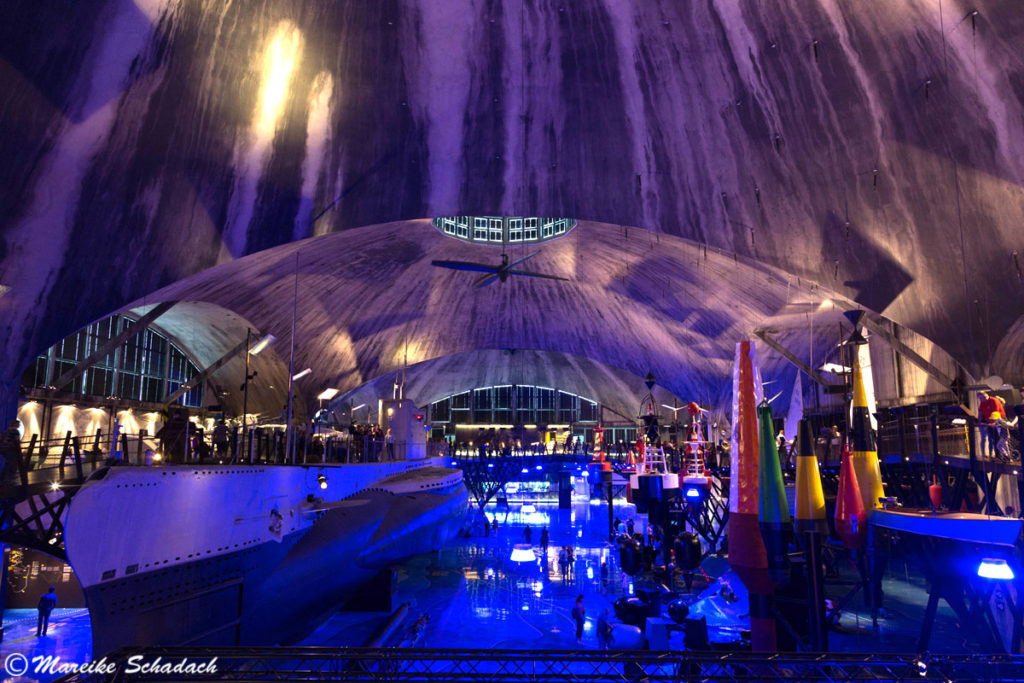
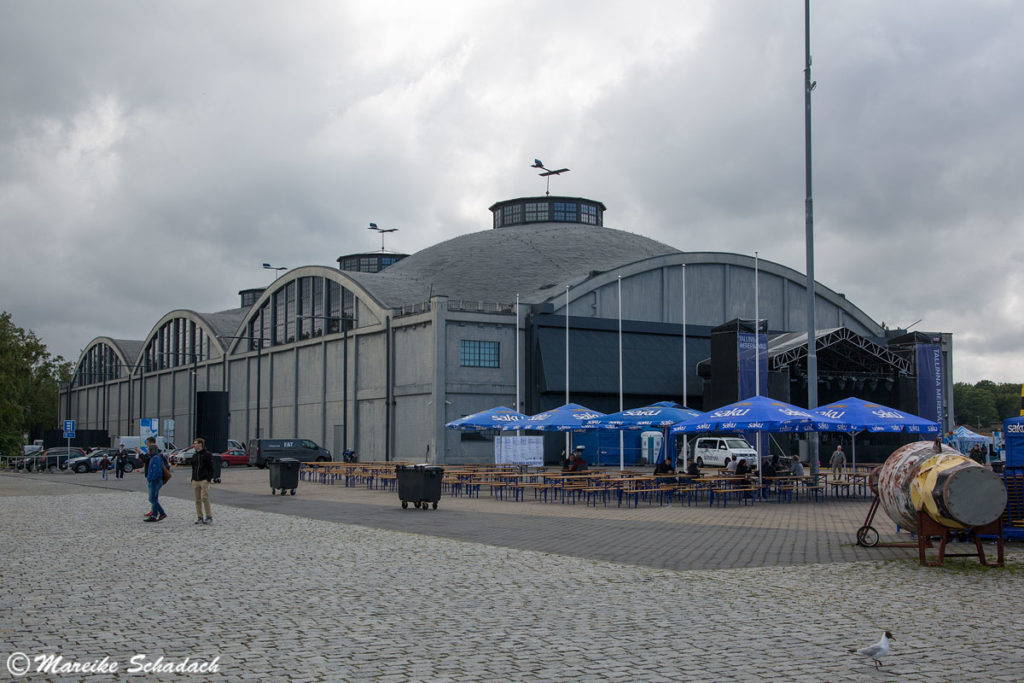
On an exhibition area of 6.500 m² you can see about 200 ships. Among them are the submarine "Lembit" from the 1930s, the icebreaker "Suur Tõll" and the wreck of the ship "Maasilinn", one of the oldest wrecks in Estonia. Sailing boats, historical ships and a wide range of marine equipment are also on display.
Address:
Fat Margaret: Pikk 70
Seaplane hangar: Vesilennuki 6
Opening hours:
May-September: Mon-Sun from 10am - 7pm;
October-April: Tues-Sun from 10am - 6pm
Admission fee:
Fat Margarethe and hangar: adults 20 euros; children 10 euros.
Hangar only: adults 15 Euro; children 8 Euro
#10 Bogs of Estonia
A hike through a raised bog is surprisingly varied. At first sight the wide landscape seems empty. But if you take a closer look, you will discover a colourful diversity of species. And most of the time already right next to the wooden plank path. Why the Soomaa moor was one of the highlights of our Baltic road trip, you can read in my separate article Off to the Bog! - Tips for your Visit to Soomaa Bog. I also give you tips for your visit to the Soomaa Bog and tell you why you should definitely take a mud bath here.
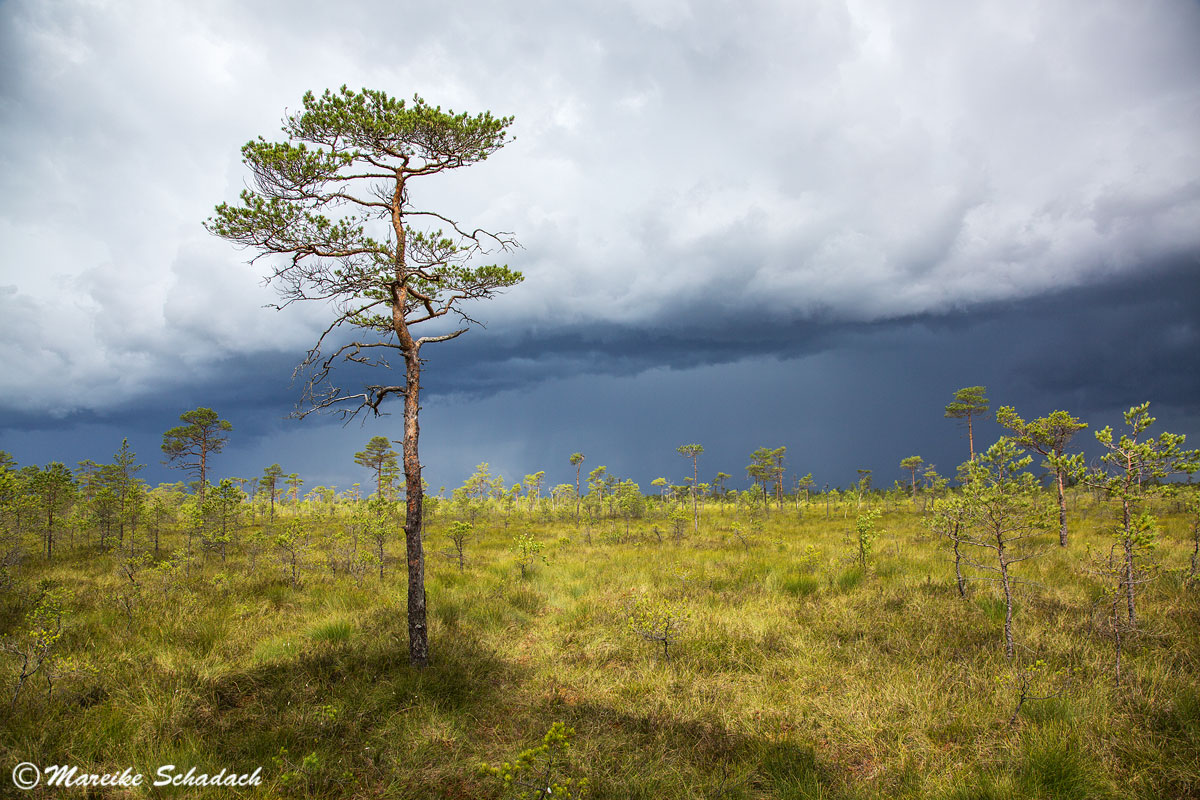
#11 Riga - Capital of Art Nouveau
The capital of Latvia is famous for its Art Nouveau buildings. And rightly so! Because there are many of them and many of them are really beautiful. There is always something new to discover at the richly decorated buildings. Mystical figures decorate the facades, others support the balconies. There are also numerous decorated columns, undulating lines of plants, flowers, masks and other abstract elements.
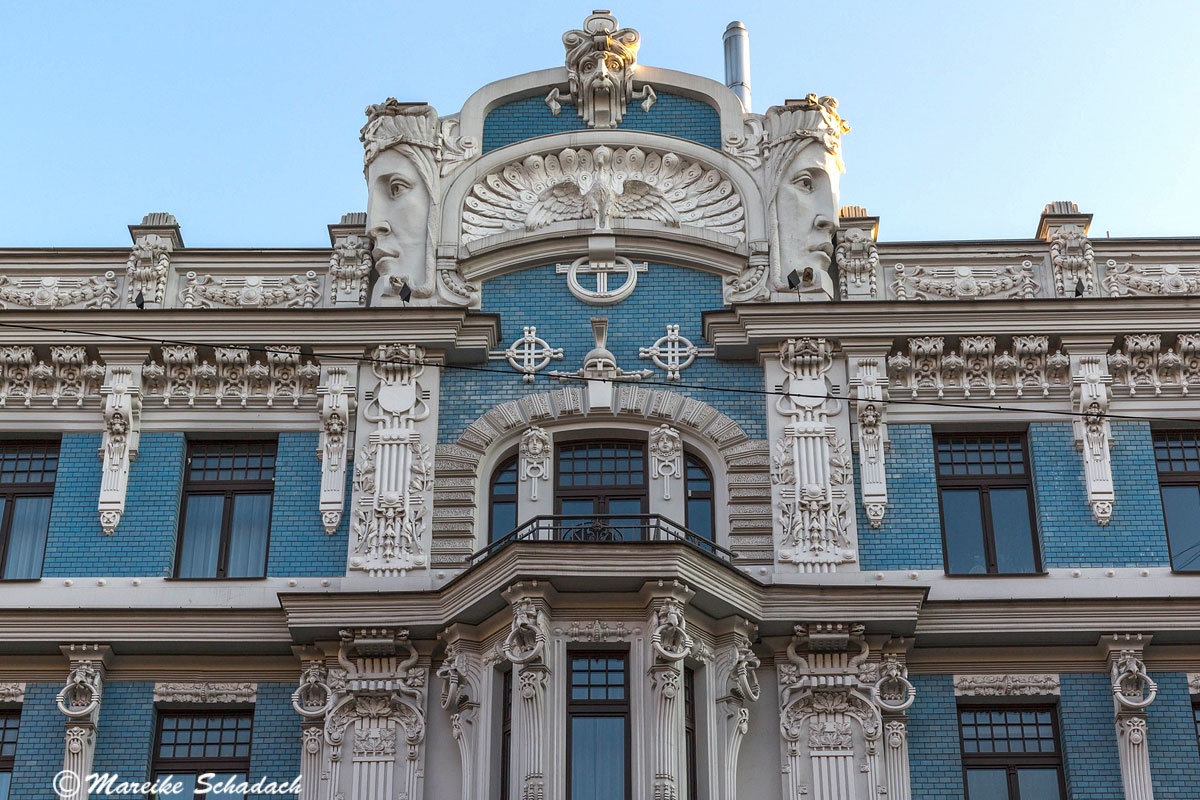
Many art nouveau buildings are located in the Albertastraße. The beautifully decorated buildings were built between 1901 and 1908. 12 Albertastraße is also home to the Riga Art Nouveau Museum visit. A magnificent spiral staircase will take you up to the museum rooms with authentic furnishings dating back to 1903. If you are interested in architecture, then an Art Nouveau city tour with a guide** may be just the thing for you.
What else is there to see in Riga? The entire historical centre of Riga is listed as a UNESCO World Cultural Heritage Site and is well worth a visit. In the very well-preserved Old Town of Riga, you will find not only Art Nouveau buildings but also medieval buildings and beautiful examples of 19th century wooden architecture.
Pitch for the Night
We stayed for two nights at the Riga City campground. From here you can walk about 35 minutes to the historical city centre. The place was big, full, but well organized.
#12 Jūrmala - Luxury and Lost Places
Jūrmala is a seaside resort on the Gulf of Riga and the only official spa resort in the country. It is only about 40 kilometres from the city centre of Riga to one of the most beautiful sandy beaches in the Baltic States. This fine sandy beach, the dunes and cozy pine forests have attracted many guests already at the beginning of the 20th century. During this time, wealthy people from Riga and Moscow built their summer houses here - colourful Art Nouveau villas made of wood with turrets and elaborate facades. You can get an overview of the most beautiful Art Nouveau buildings here. There are said to be a total of 4,000 houses. Many of them are also listed as historical monuments. However, some of them are run-down and abandoned. But also these houses are witnesses of the pomp and luxury that filled Jūrmala at that time. Later, during the Soviet era, up to 300,000 visitors came to Jūrmala every year and large, ostentatious sanatoriums were built.


But the rapid development of tourism in Jurmala also had its downsides: The water quality became worse and worse. In the 80s, swimming in front of Jūrmala was finally no longer possible. Fortunately, however, this has changed again. Since 2001, the "Blue Flag" - the quality mark for water quality - has been flying on the beach at Jūrmala. But what has not changed until today: Strolling, going out and enjoying are still the top priorities in Jūrmala.

The former bathhouse of Emilija Racene was built directly on the beach at the beginning of the 20th century. Throughout the year, warm sea water, carbon dioxide, oxygen and pine extract baths were offered here daily. During the Soviet era, the building housed the best equipped spa clinics in Jurmala.
#13 Blue Cows in the Engures Ezers Nature Reserve
It is said that blue cows live in the Engures Ezers nature reserve. At first we thought this was an error in translation. But then we found more clues about these mysterious animals in other places. Legends tell that the first seven blue cows came out of the sea at full moon. So let's go!

On the west coast of the Riga Bay is the nature reserve Engures Ezers. This consists mainly of a shallow lagoon lake, separated from the sea by a dune up to 2.5 kilometres wide. The lake is also densely overgrown with reeds. Wooden plank paths lead you over wet meadows to the shore. The meadows are an important nesting and resting place for waders and water birds during migration. From a birdwatching tower you have a wide view over the landscape. And if you are lucky, you might see a rare bird, such as a corncrake, an eagle owl or a sea eagle. The fact that this tower is well visited is also known by the free running Polski and Konik horses. They are supposed to keep the vegetation short and thus prevent scrub encroachment. But they prefer to eat apples and carrots brought by the visitors rather than grass.

Tip: The orchid trail
The orchid trail leads you over 3.5 kilometres through bog and forest to the lakeside. It starts near the Engure Centre for Ornithological Research. The best time for a hike is from the end of June to mid July.

And the blue cows? I could not see a blue shimmer in their fur, but the "Latvian Blue" with its blue-grey fur does exist. But today there are only about 1240 animals left. An association takes care of the preservation of this endangered species.
#14 Cape Kolka - National Park & Relicts of the Soviet Era
Cape Kolka is the northernmost point of the Kurland Peninsula and separates the Gulf of Riga from the Baltic Sea. During the Soviet era, Cape Kolka was a restricted military area. Because from here the Swedish coast is particularly close and the escape to the west was therefore particularly obvious. Watchtowers were built to prevent this. In the fishing village of Mazirbe fishing was also forbidden and boats were dragged into the forest. The boat graveyard and several watchtowers can still be seen today. You can read more about these relics from the Soviet era here.

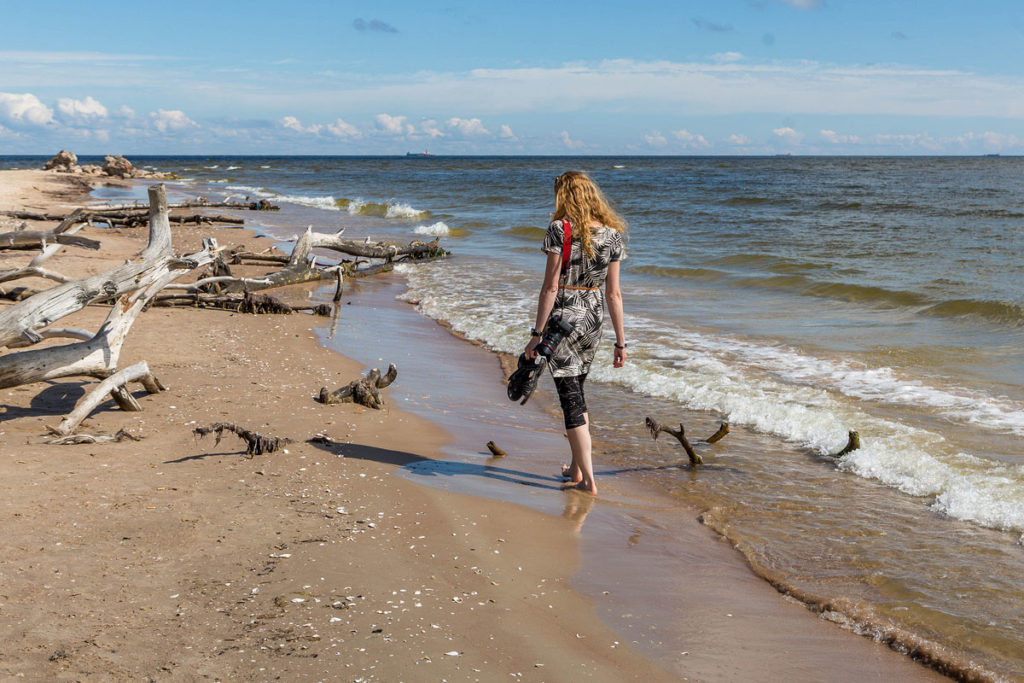
After the withdrawal of the Soviets, the area was finally designated as the National Park Slītere in 2000. The national park comprises 163.6 km² of land and 101.3 km² of water. The landscape is varied, but wooded dunes and swampy areas dominate. The different habitats lead to a high diversity of species. Among them are rare species such as the european pond turtle, sea eagle, black stork, wolf and lynx. In addition, 125 bird species breed in the national park. The Cape is also an important resting place during bird migration with up to 50,000 migrating birds per day.
Tip: At Cape Kolka you can watch the sunrise as well as the sunset over the sea.
#15 Bunkeranlage “The Northern Forts” bei Liepāja in Lettland
Since 1890 the port in Liepāja was an important naval location and base of the Russian Baltic Sea fleet. To protect the port from enemy attacks, elaborate fortifications were built between 1893 and 1906 - the so-called Northern Forts. Since then, the massive concrete bunkers stretched for several kilometres along the coast.
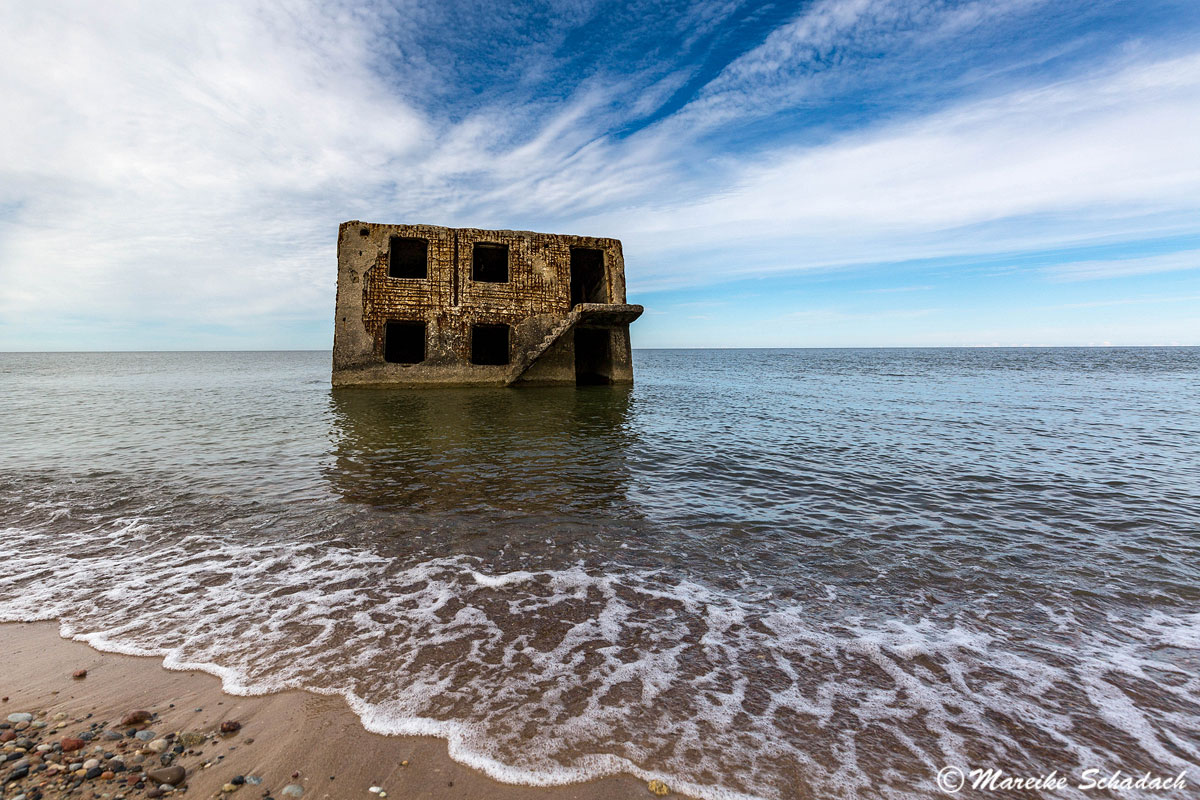
But soon the line of defense was recognized as a misplanning. In November 1908 Tsar Nicholas II finally decided to give up the sea fortress at Liepāja. The cannons were dismantled and partly melted down. However, attempts to blow up and remove the bunkers failed. Instead, a series of bunker ruins were created - bizarre shapes made of concrete, which the sea slowly took away. Absolutely worth seeing and for me as a fan of lost places and bunkers also a highlight of our road trip in the Baltic States.
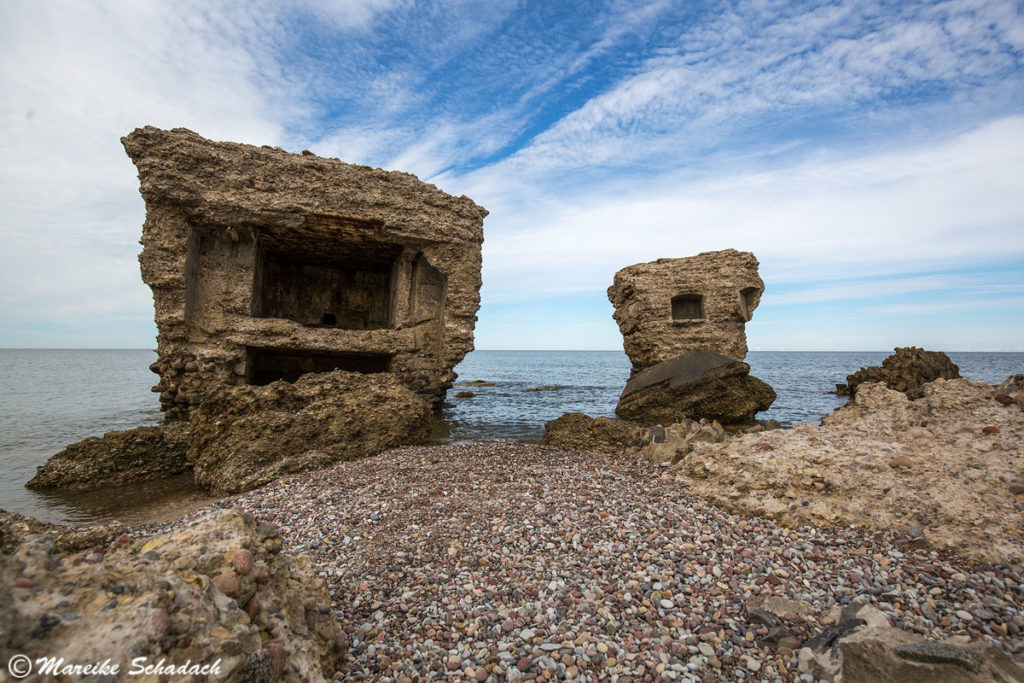

Where? The bunkers extend several kilometres along the coast. You can reach them for example via Krasta iela, Koknese iela or Jatnieku iela. But the most impressive part of the fortress with the best photo motives you will find at the Krasta iela.
#16 Curonian Spit - Shifting Dunes & Cormorants
Sand as far as the eye can see. And even across borders. Because the 98 kilometre long Curonian Spit is partly in Lithuania (52 km) and partly in Russia (46 km). The cross-border national park was designated in 1991. Since 2000 it has been listed as a UNESCO World Heritage Site. It includes shifting sand dunes, pine forests, the lagoon and the Baltic Sea coast.
The spit was created by erosion-induced sand movement and subsequent deposition in the shallow coastal waters. However, the sand was exposed during clearings in the 16th century. As a result, huge shifting sand dunes were created, which in the course of time buried 14 villages beneath them. Today, however, attempts are made to stabilise the sand dunes by planting. But the sand still moves about one meter towards the Baltic Sea every year.
The Curonian Spit with its shifting sand dunes was one of the highlights of our road trip in the Baltic States. What did we like best? The big cormorant & heron colony near Juodkrante, the grey dune as well as the Parnidis dune. And what we did not like at all? Well, the Curonian Spit is a popular tourist destination. It was just extremely crowded. Probably also because we were there at the peak travel time. Tip: On the Russian side it is much less crowded.
The Grey Dunes
The Grey Dunes are located in the Nagliai Nature Reserve. They are named after the greyish vegetation that covers the dunes in the areas sheltered from the wind. The vegetation holds the sand and slows down the drifts. The grey dunes are about 8 kilometres long and 2 kilometres wide. Four former villages are also buried beneath them.
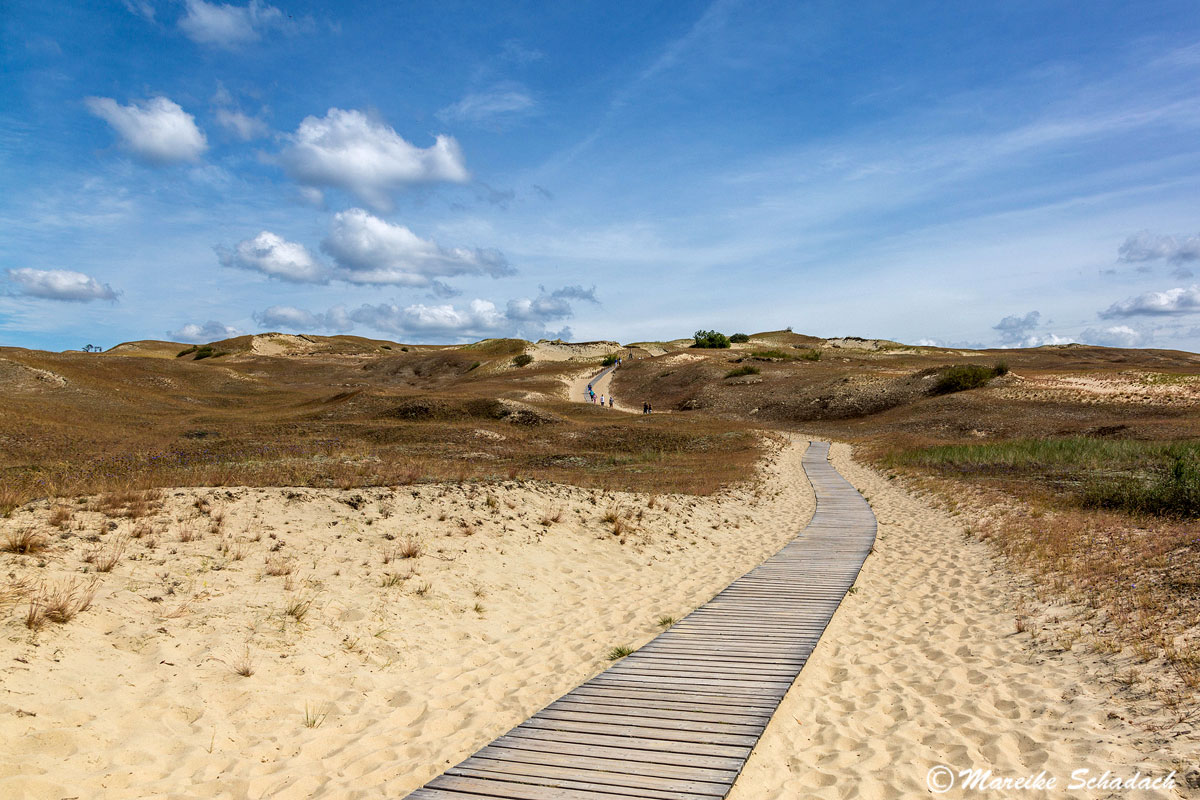
However, the parking situation is difficult, especially with larger campers. So it is best to arrive early. Then also the photo light is much nicer than at noon. There is also a small entrance fee to pay. A nice path, which partly runs on wooden planks, leads you up to the highest point of the dune.
Cormorant & Heron Colony near Juodkrante
The trunks and branches of the pines are white from the guano of the birds. The treetops are full of black cormorants. There are thousands of animals that have built their nests here. Among the cormorants, there are also grey herons. These large birds nest on trees, too. Amazing, isn't it? The colony near Juodkrante is the largest cormorant & heron colony in the country and counts about 6500 animals. A spacious parking lot invites you for a stopover. Already from here you can see, hear and smell the colony. The best view is from the observation deck at the edge of the parking lot.

Parnidis Dune near Nida
The Parnidis dune is the landmark of the Curonian Spit. It rises south of Nida to a height of 52 metres and is one of the largest shifting sand dunes in Europe. But it is getting smaller. The reason for this is erosion - natural by wind and rain, but also man-made. Because climbing the slopes and walking on the dune off the wooden plank paths are damaging it. From the highest point of the dune you have a great view over the coastal strip and the forests to the Baltic Sea. When we were on the Parnis dune, it rained unfortunately, so there are only few photos. The best way to get to the dune from Nida is to follow the nature trail "Parnis Dune Trail", which is about 1.8 km long.
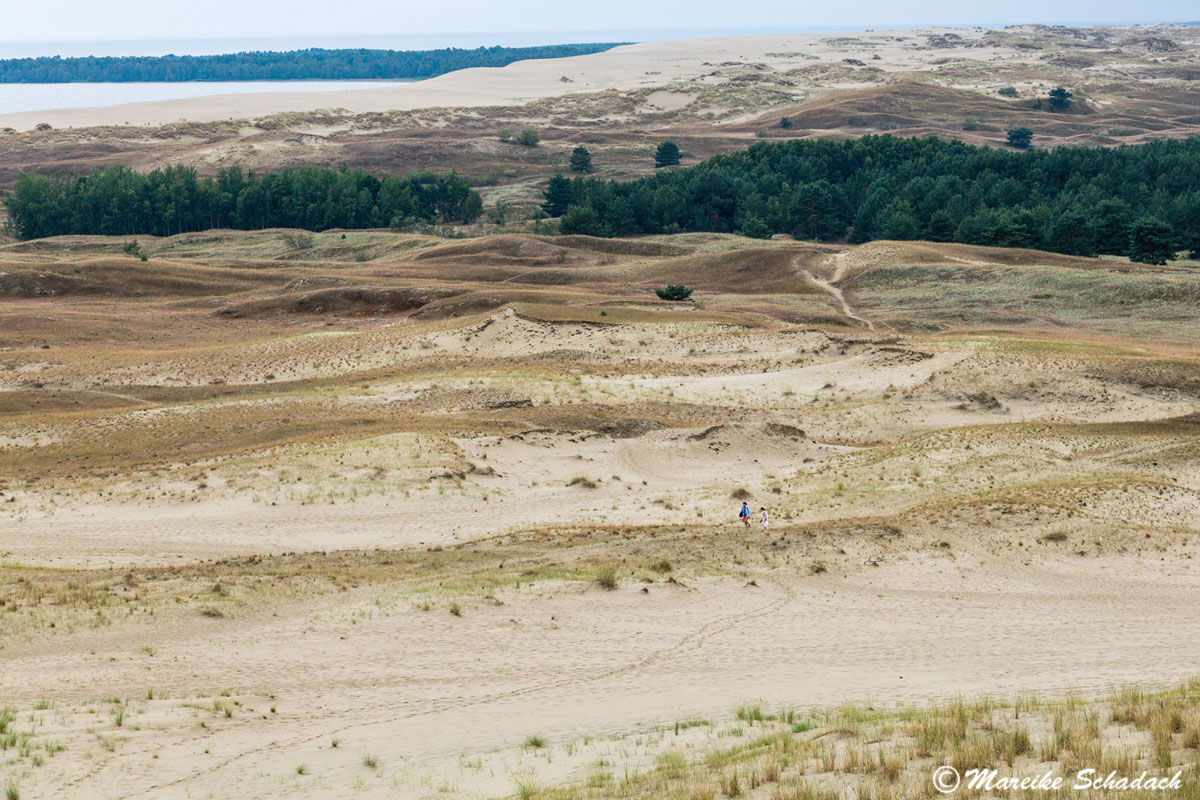
Getting there from Kleipeda: From the ferry pier in Kleipeda ferries leave every 30 minutes to the Curonian Spit all year round. You can check the current timetable and prices here . Depending on the season there is an entrance fee of 5 or 10 Euro for the park.
Pitch for the Night
Free camping is not allowed within the Curonian Spit National Park. Therefore we spent one night on the parking lot at the ferry port Smiltynė in the northern part of the island and two nights on the camping site Nidos Kempinggas in Nida.
#17 Memel Delta - Boat Trip to the largest Bird Catching Nets in the World
In the small port of Nida, colourful signs attract guests. They offer boat trips, for example a half-day excursion to the Memel delta. The highlight of the excursion is a visit to the ornithological station at the tip of the Ventés Ragas (Windenburger Eck), which is about 5.5 kilometres long.
The ornithological station is one of the oldest of its kind in the world. Bird migration has been observed here since 1929. And there is a lot to see here. One of the most important bird migration routes of the entire Baltic Sea region runs along the Curonian Spit. During bird migration, up to one million birds fly over the Ventés Ragas headland every day. Many stop here for a rest and some of the birds get caught in one of the largest bird-catching nets in the world. The birds are then measured, weighed, ringed and finally released.
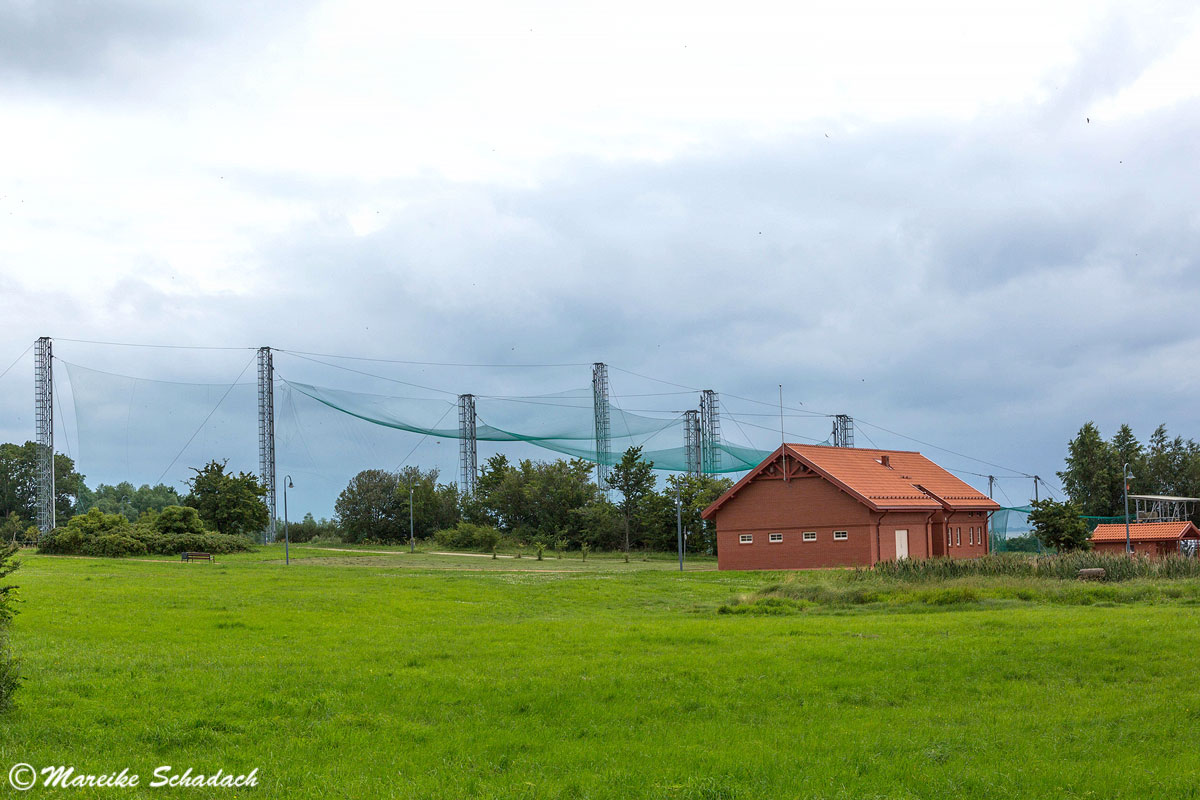
Since 1930 birds have been caught and banded or ringed here. Since 1978 / 89 the two largest bird nets in the world have been standing here. They are 25 meters high and catch 50.000 to 80.000 birds every year. Smaller nets are also used to catch insects such as butterflies and dragonflies.
#18 Relicts from the Soviet Era
Estonia, Latvia, Lithuania - three countries and three different stories. But the three Baltic countries have one thing in common. They once belonged to the Soviet Union. Even today you can still find traces of that time in many places. I will show you some of them in my separate article Relicts from the Soviet era - tips for your tour in the Baltic States. The relicts from the Soviet era were for me one of the highlights of our road trip in the Baltic States.
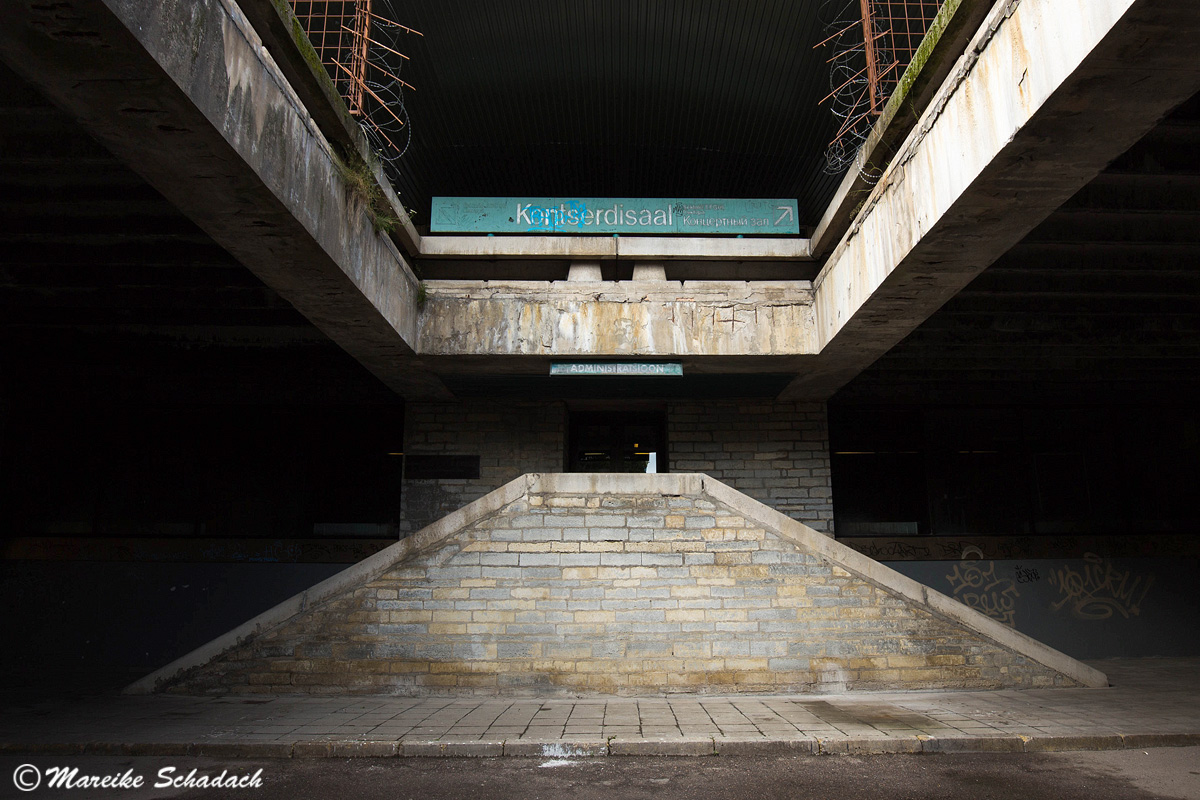
#19 Kurshskaya Kosa National Park
Shortly after the border you will come to the checkpoint for the Kurshskaya Kosa National Park. Here you have to pay a small entrance fee (40 roubles / person; 300 roubles / car), either in cash or by credit card. The park is much less crowded here than on the Lithuanian side. The paths to the dunes are wilder and not so strictly fenced. There are several picnic areas, from which you can reach the water or the dunes after a short walk. About 8 kilometres behind the border, on the 40 metre high dune range, you will find the viewpoint Ephas Höhe . From here you have a great view of the 62 meter high Orekhovoy Dune - Europe's highest shifting sand dune.

About 17 kilometres after the border you will reach the "Dancing Forest". The pines of the Dancing Forest have grown twisted like a screw and give a bizarre picture. A laid out path leads you to the most beautiful specimens. Why the pines are the way they are, however, nobody knows exactly. But one speculates that underground water veins could be the cause.

#20 "Little Russia" - Russian Exclave Kaliningrad
The coast of the Kaliningrad region was already known for its large amber deposits in Roman times. In the 13th century Teutonic knights finally founded the city of Königsberg. The city in East Prussia was prosperous, cosmopolitan and popular. It is also said to have been one of the most beautiful cities in Germany. After the First World War, however, it was separated from the rest of Germany. And after the Second World War the city lay in ruins. In 1946 Königsberg was finally renamed Kaliningrad in honour of the former Soviet head of state Kalinin and rebuilt in Soviet style.

Since the Baltic States regained their independence in 1991, the Kaliningrad region has been an exclave of Russia. "Little Russia" is separated from the rest of Russia by Poland and Lithuania. We entered Kaliningrad from Lithuania via the Curonian Spit. The control at the border crossing was quick and smooth.
Walk through Kaliningrad - Prussian Architecture and Soviet Chic
With its mix of old Prussian buildings, prefabricated concrete slabs, parks and Soviet chic, I immediately took the city to my heart. Our highlights in Kaliningrad were:
Dom Sowjet: The old city castle was destroyed in the Second World War. On its remains the Dom Sowjet was built in the 60s. But it was never completed. The reason for this were static problems caused by the building ground. Because a tunnel was discovered in the underground, which once connected the castle with the cathedral.


Königsberg Cathedral: Königsberg Cathedral: Not many of the original historical buildings of the old Königsberg have been remaining since the Second World War. However, some buildings have been restored, such as the Königsberg Cathedral dating from 1333. It is now listed as a UNESCO World Heritage Site. By the way: right behind the cathedral there is the grave of the philosopher Immanuel Kant.
Amber Museum in the Dohnaturm: I was quite amazed - the things you can't make out of amber. But the coolest thing I found was the amber world map. The amber museum shows more than 6000 exhibits, among them a 4.28 kilogram stone and numerous stones with enclosed insects. The tower is part of the old fortification of the city. The walls, gates, towers and bastions of red brook stone were built between the 17th and 19th centuries.


TipSince July 2019 it is possible to get a free electronic visa for a maximum stay of 8 days. You can find more information here.
Pitch for the Night
About 15 kilometres east of Kaliningrad lies the camping site Festival'nyy. But as our time was slowly running out, we wanted to stay closer to the centre. Therefore we took a room for two nights in the Ibis Hotel Kaliningrad Center near the cathedral. For our camper there was a gap left on the guarded hotel parking lot.
#21 Gdansk - Walk through one of the most beautiful Cities in Poland
The port city of Gdansk is considered one of the most beautiful cities in Poland. Thanks to the restorers! Because they did a great job here after the Second World War. At that time the city was about 80% destroyed. The old town was then rebuilt under functional aspects. However, the so-called "Rechtstadt" was restored true to the original and richly detailed.
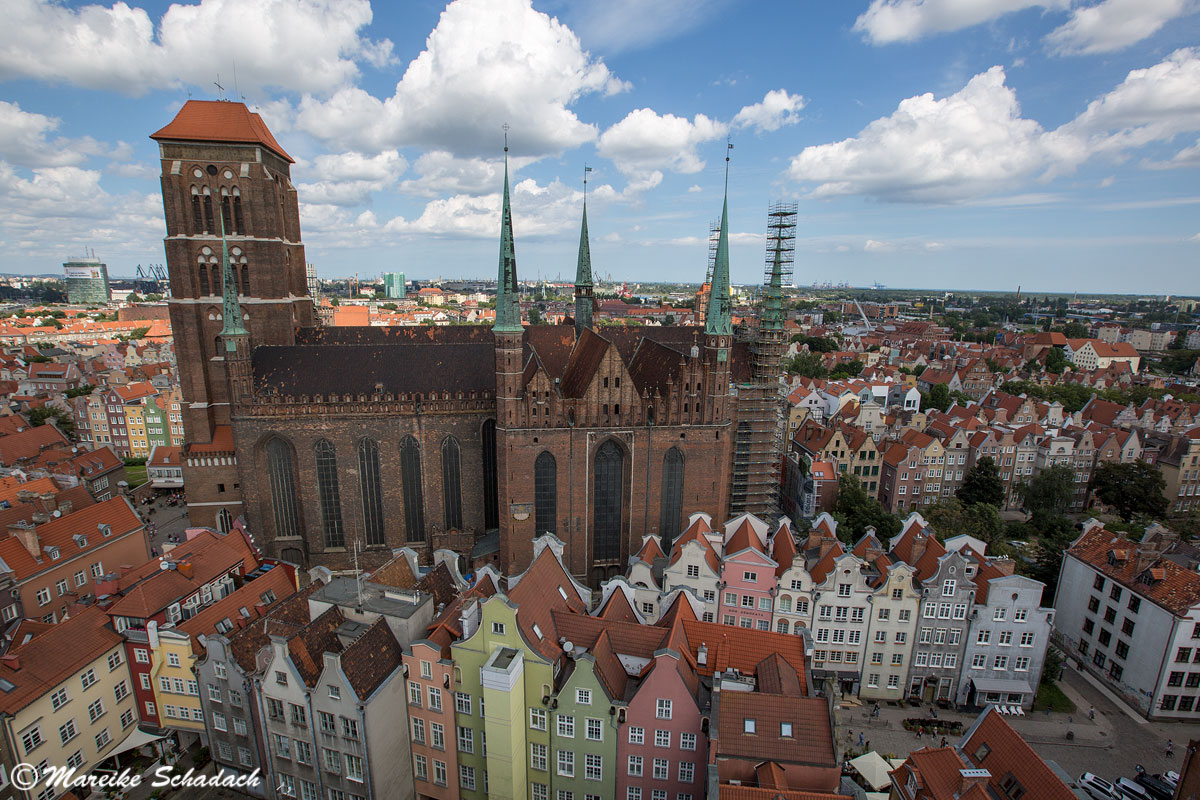
During a walk through the "Rechtstadt" you can see the most important highlights of Gdansk. This is where the so-called Royal Street runs - the boulevard formed by the Long Street and the Long Market. The typical colourful gabled houses of Gdansk line up here in a line.
You should also take a look at the Frauengasse. The houses here have terraced porches which used to serve as flood protection. From Frauengasse you can reach the famous crane gate through Frauentor. This city gate made of brick and wood is the most famous landmark of the city.

General Tips for your Road Trip in Russia & Baltic States
The Russian Driving Style
Russian car or truck drivers like to overtake - no matter where. Even in curves or in front of mountain tops! Especially our slower Iveco ( travelling speed about 80 km/h) was often overtaken by the big trucks. If the road has an asphalted hard shoulder, this was also used. On a two-lane road, three vehicles often drive side by side. Really needs getting used to! But it was quite extreme on the E105 from the east towards St. Petersburg. Wherever it was possible, we of course let pass vehicles that for some reason were jammed behind us. The bus stops at the country roads are very good for this.
By the way: If an oncoming vehicle uses the headlight flasher, the driver usually warns of an upcoming police control. During our whole tour we were not even controlled.
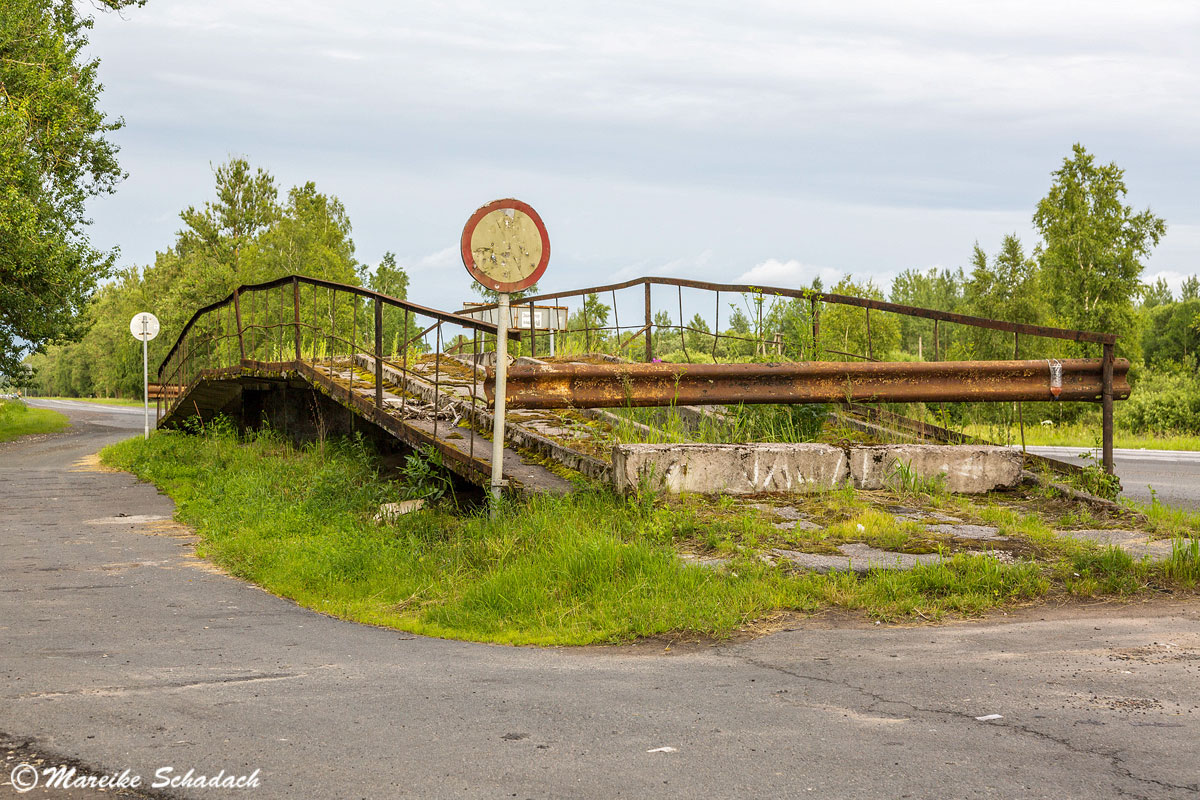
Pitches for the Night
In Finland, Russia-Karelia and the Baltic States, so-called "wild camping" is allowed and quite normal. Beautiful pitches are available in the Baltic States like sand at the sea. In the book "Mit dem Wohnmobil ins Baltikum: Litauen, Lettland, Estland" (in german) you will also find many suggestions for suitable pitches. But here is the rule: First come, first camp. Most of these sites are no longer insider tips - if you arrive late in the evening, the sites may already be taken. Furthermore, these free pitches should not be overloaded with too many campers.
Do you need some camping equipment? You can find comfortable folding chairs, practical camping accessories or a picnic blanket at Bergzeit*. Take a look right now.
The "wild camping" will of course only be accepted as long as all campers follow certain rules. That means:
- Don't leave garbage or any other mess!
- Do not destroy nature with your tires! Respect nature reserves and national parks and stay here on the official parking lots.
- Keep some distance to settlements / houses.
- Be careful with open fire - only at suitable places, or better avoid it.
- Don't park on cultivated land
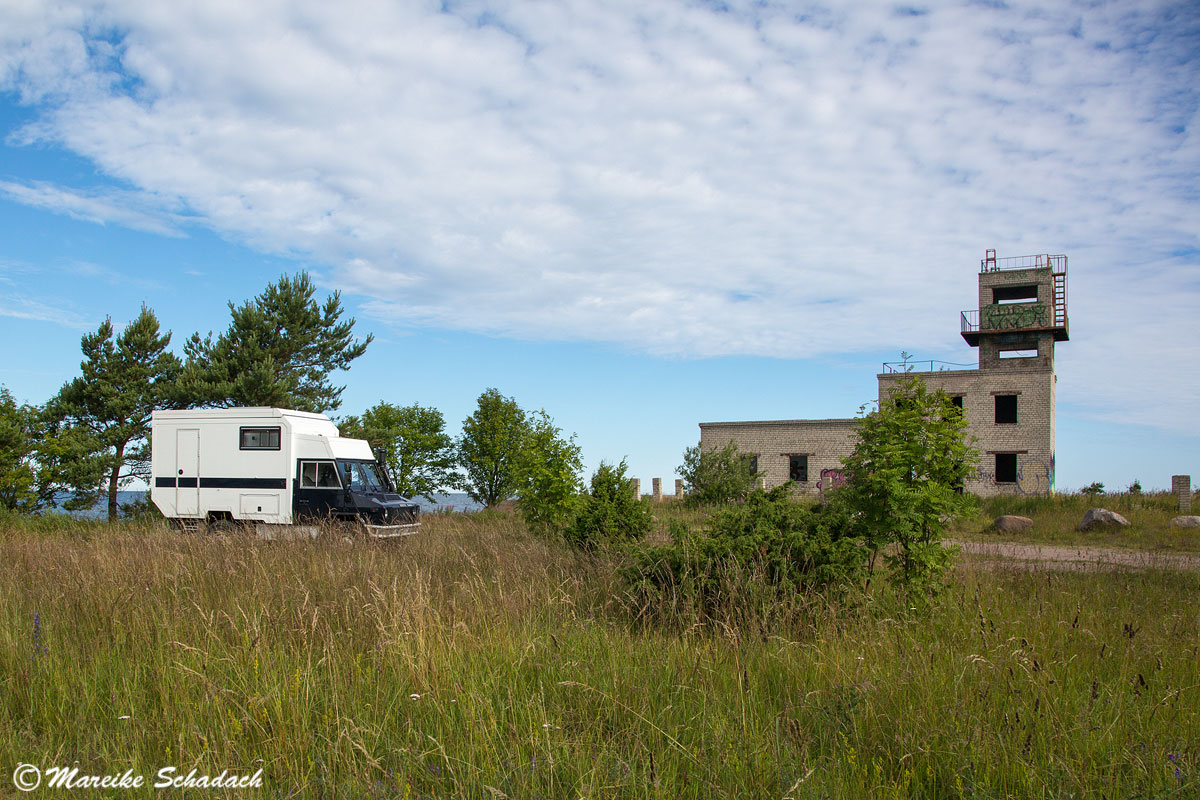
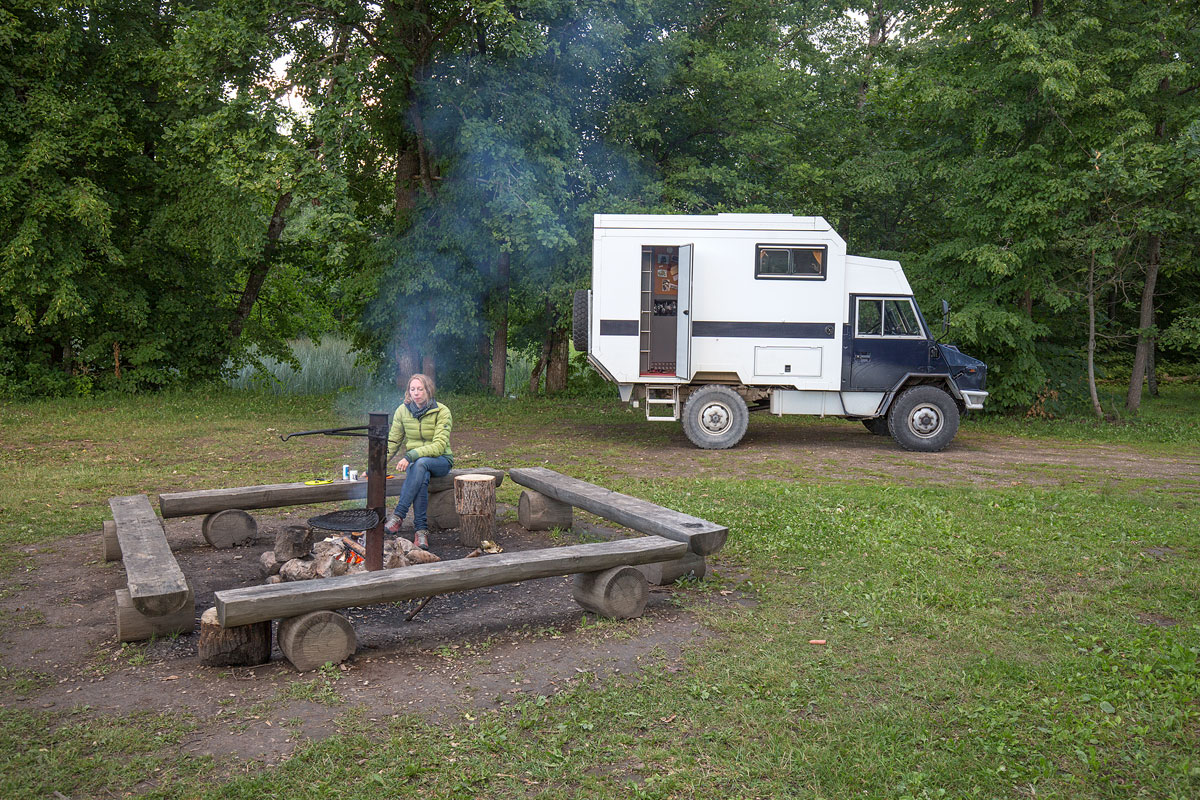
Toll Fee
Only in Poland we had to pay toll for the motorway, because only here we drove on the motorway. As our Iveco weighs over 3.5 tons, electronic toll payment was also obligatory for us. For this we had to install a transponder box from ViaToll with prepaid credit just across the border. Unfortunately, returning it to a petrol station before the border didn't work out. We still have the box. For all vehicles under 3.5 tons, however, manual toll payment is possible at the toll stations.
You can find out about the current toll regulations on the ADAC website. Another very helpful guide to tolls for motorhomes in Germany and Europe can be found in the mobility magazine of Bussgeldkatalog.org.
Traffic Rules
In addition to a foreign driving licence, the international driving licence and the vehicle registration document, you also need the green insurance card. Make sure that Russia is not crossed out in the insurance policy.
Furthermore applies:
- Obligation to wear seat belts
- Mobile phone ban
- Zero alcohol limit! Russia 0.03 per mille limit.
- The headlights must be switched on even during the day.
Two more tips for Russia:
- Green lights that flicker change to orange soon after. As soon as you see the traffic light flickering you have to stop, even if it is still green.
- Attention crosswalk! Here you have to stop - which is actually self-evident, but it surprised me in Russia! Also the Russian drivers have meticulously followed this rule. But open your eyes! Because sometimes the zebra crossings are hard to recognize, especially in the cities.

Refuelling
We have researched the diesel prices on the Internet beforehand. The fuel was of course cheapest in Russia, so we only filled up there. Our 300 liter tank gave us the necessary leeway. But the fuel was also one of the dirtiest we ever filled up - after the tour we had to change the diesel filter. Payment was possible by credit card. But the procedure of filling up the tank was sometimes a little bit different than we know it from Germany: you have to go to the cash desk with your credit card beforehand and say how many liters you want to fill up (be sure to take a note and pen with you, then you can write down the number). The credit card is checked and then the gas pump is released.
The network of petrol stations is dense, you can check the filling possibilities here .
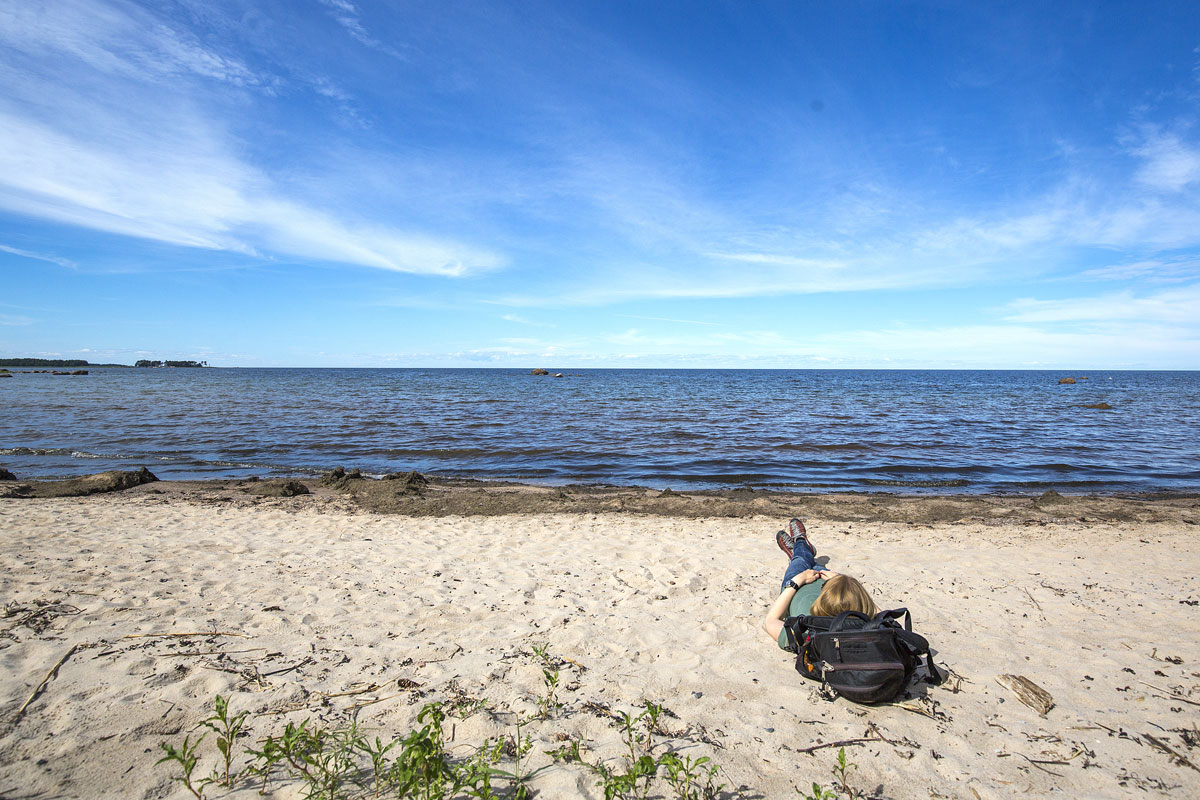
Drinking Water
Tap water is safe to drink in Finland, Estonia and Poland. Even though we installed a water filter in the camper, we preferred to fill up our water tank only in one of these three countries.
Waste water
We have collected our washing waste water in a mobile canister. For our chemical toilet we also have a typical toilet tank. We could dispose both in the sanitary facilities of the campsites where we stayed every few days.
Shopping
Shopping was possible everywhere comfortably in the supermarket. Only on the Solowezky Islands it was a little challenge. Because here you had to order the items at the counter and the salesman brought them to you. If you want to buy vodka or other alcohol in Russia, keep in mind that it is not sold until 11 am.

Travel Guide for your Road Trip in Russia & Baltic States
Do you want to know where the journey is going? Then I can recommend this travel guides* to you.
Have you ever (almost) travelled around the Baltic Sea yourself? What were the highlights of your road trip in Russia or the Baltic States? Do you have any questions about my article or suggestions? If so, please write me a comment!
Do you want to know when there are new articles on my blog? Then follow me on Facebook, Pinterest or Instagram. I would also be very happy if you share my article with your friends.
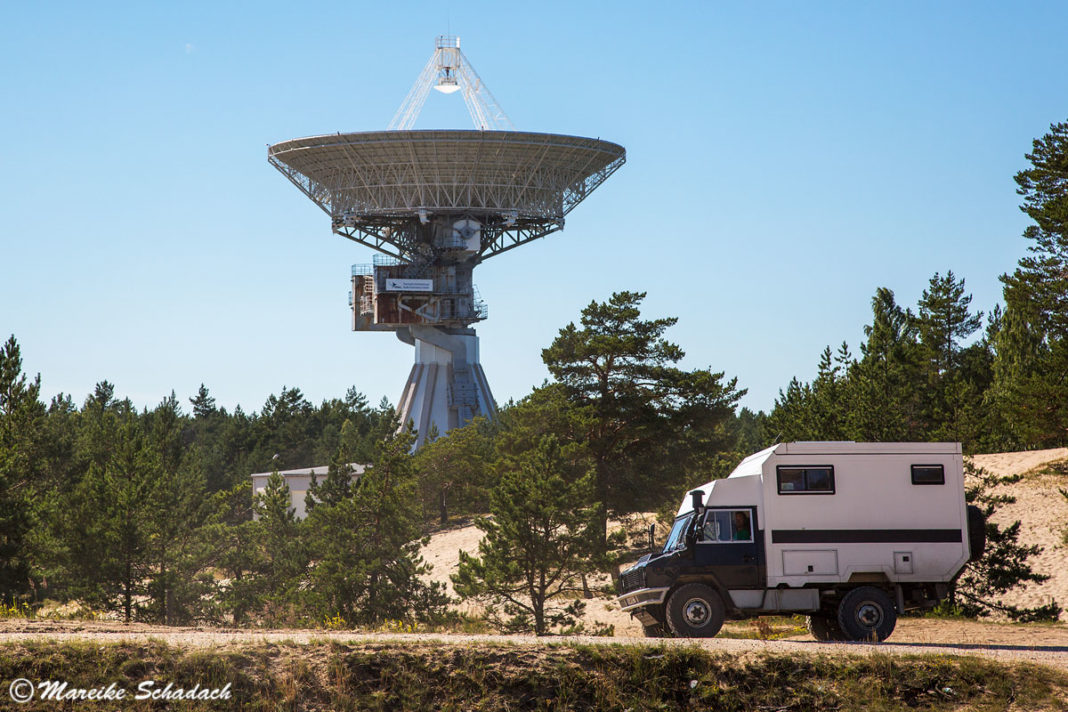







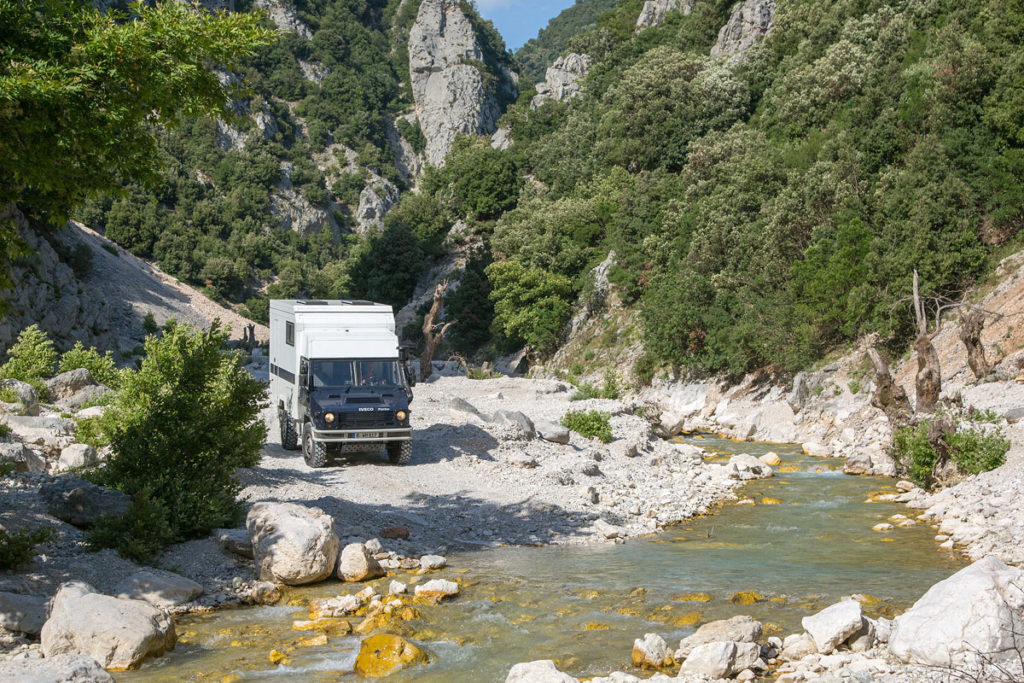

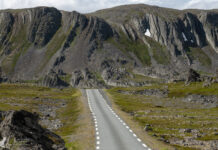
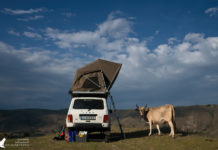





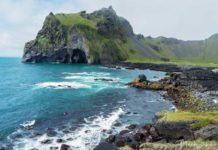
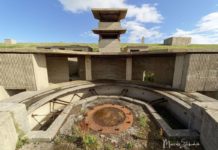
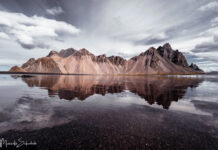
Ich bin hin u. weg von deiner Reisereportage.Vielen Dank. Nun ist mein Wunsch mal nach Russland zu reisen,noch größer.
Hallo Birgit, ganz lieben Dank für dein Feedback zu meinem Artikel!